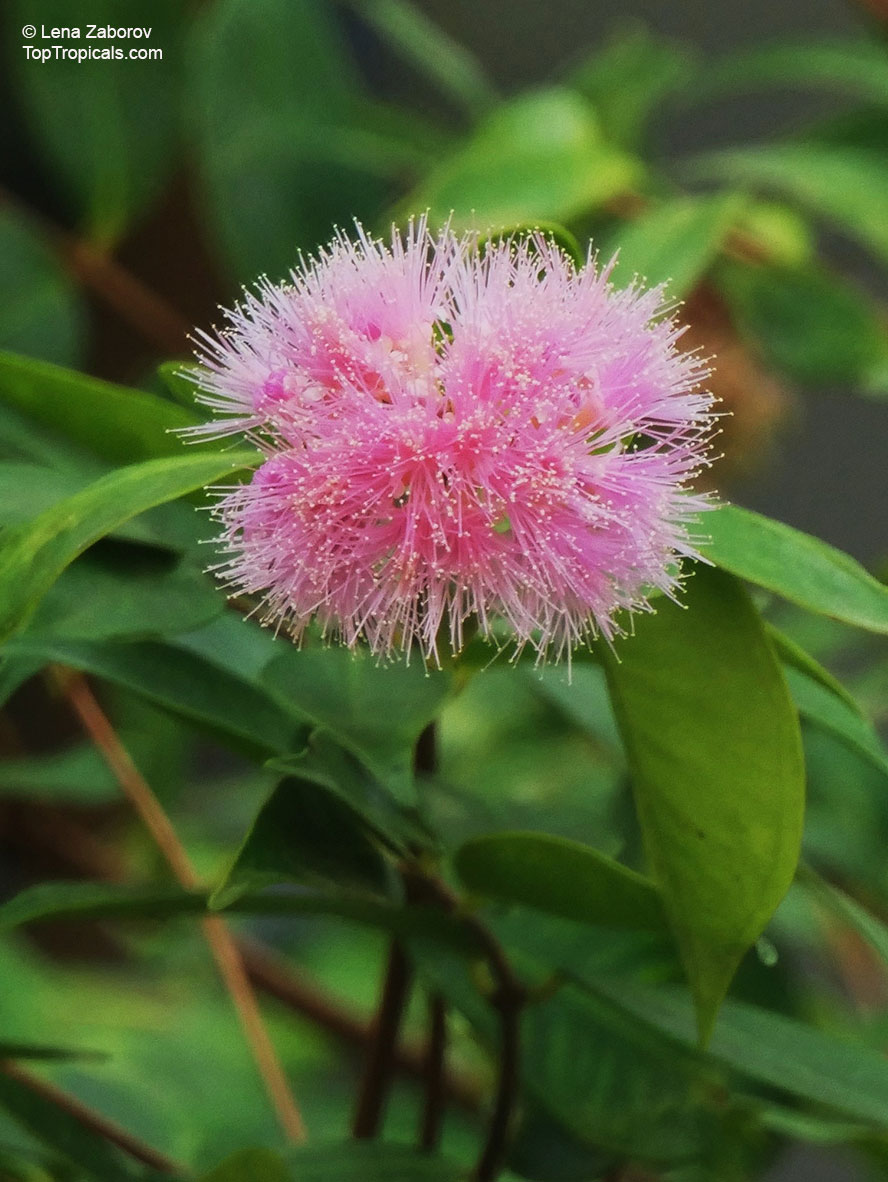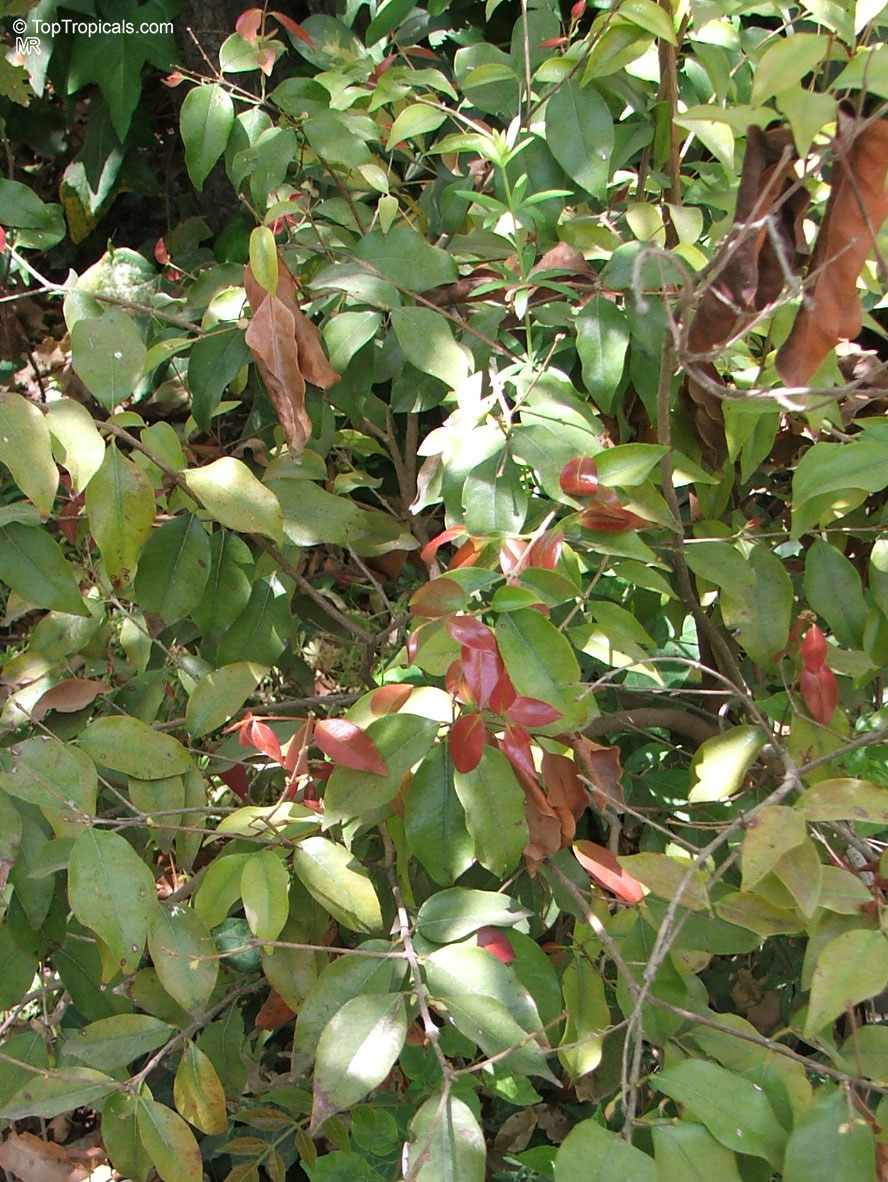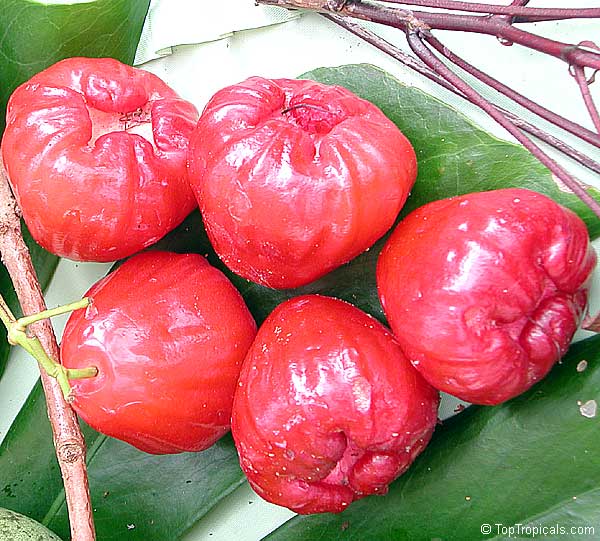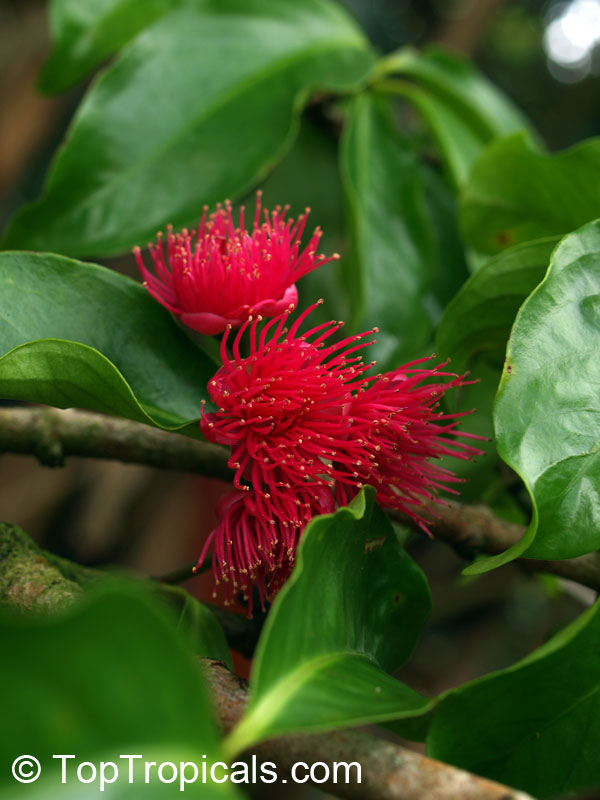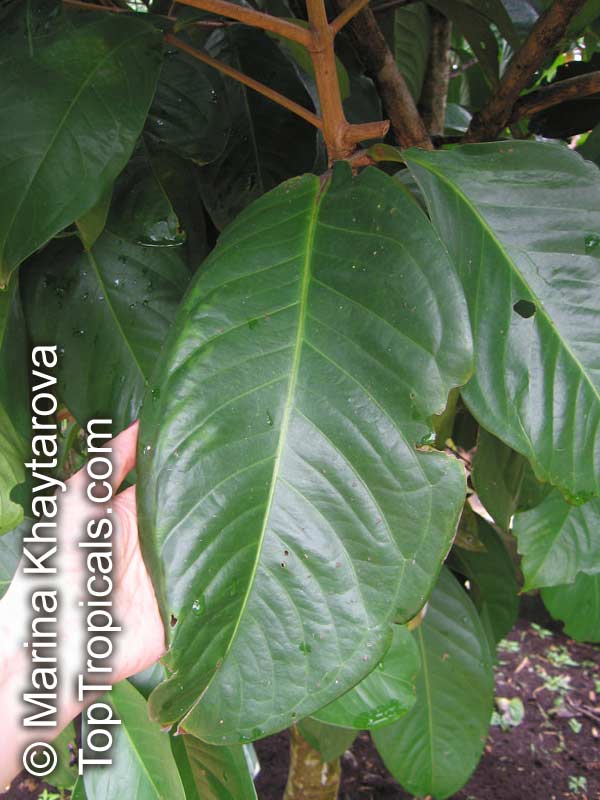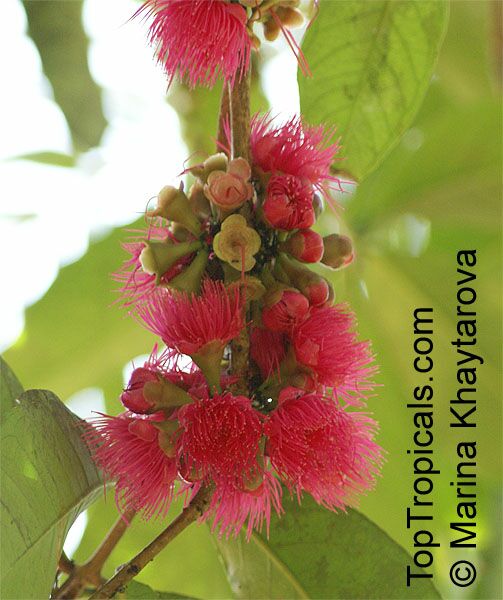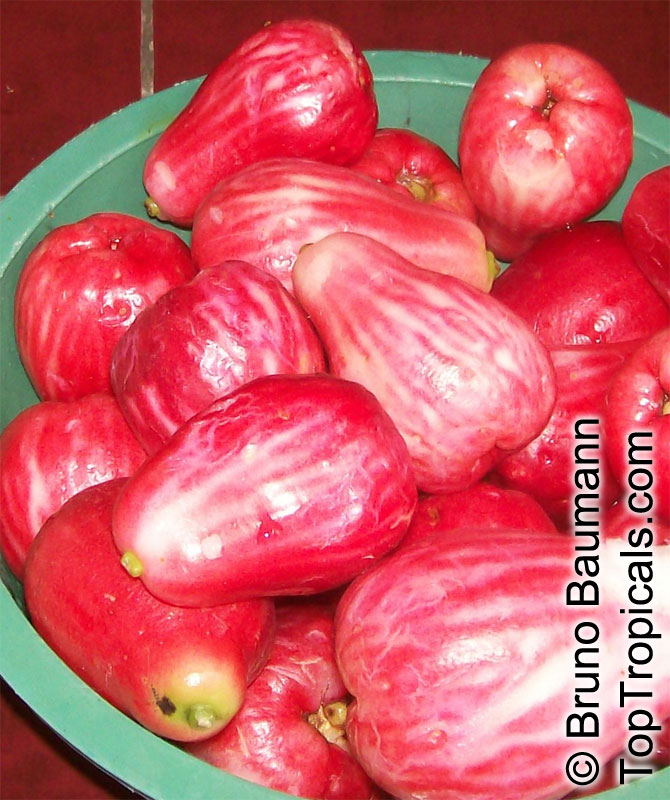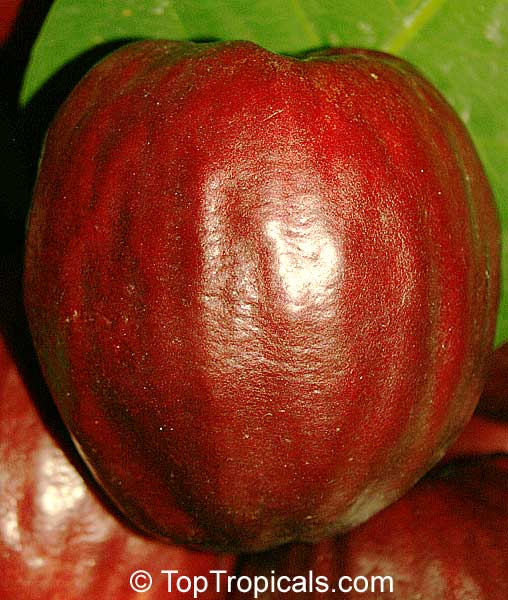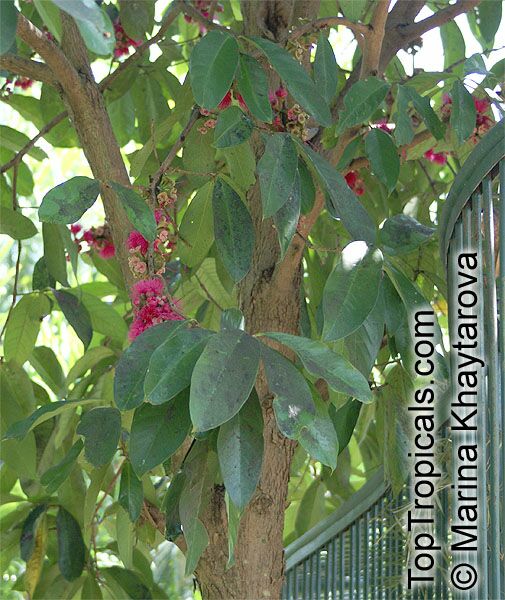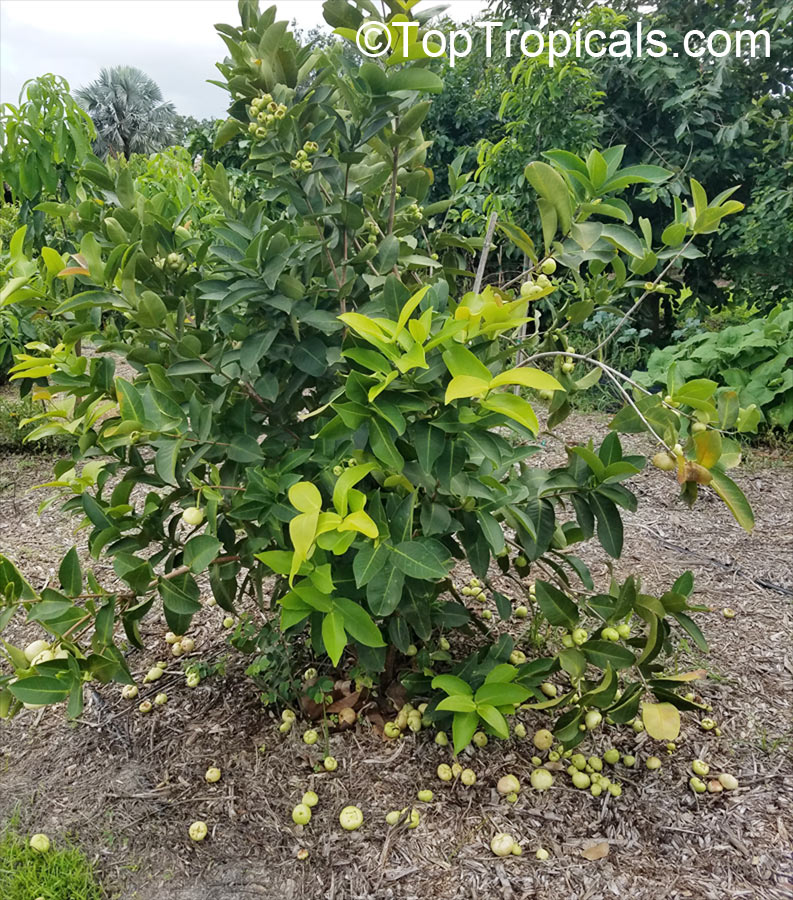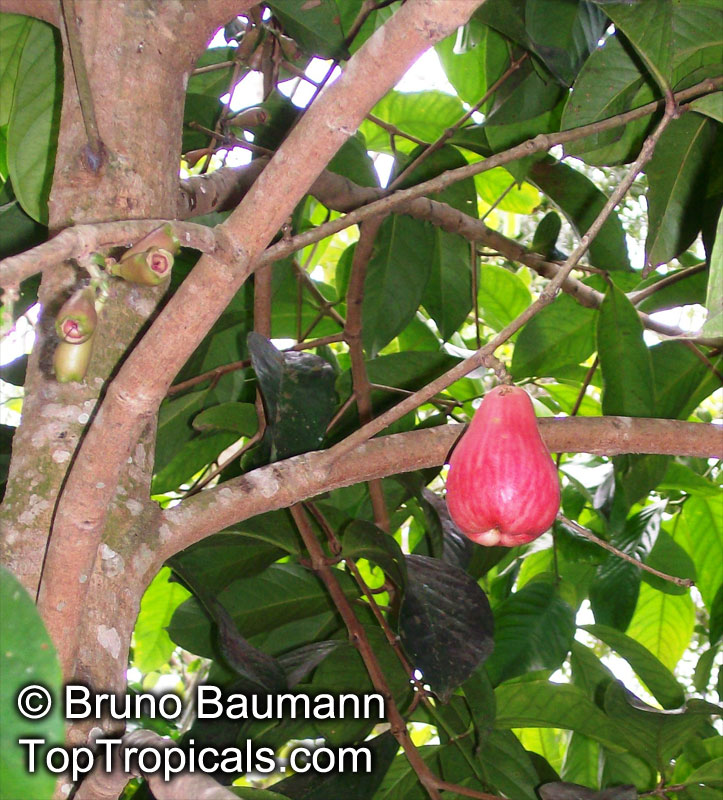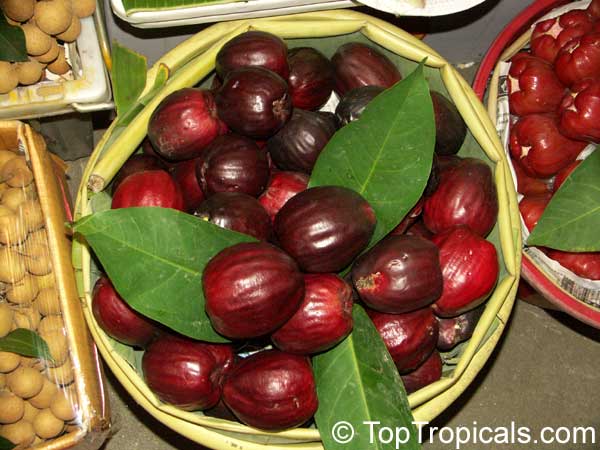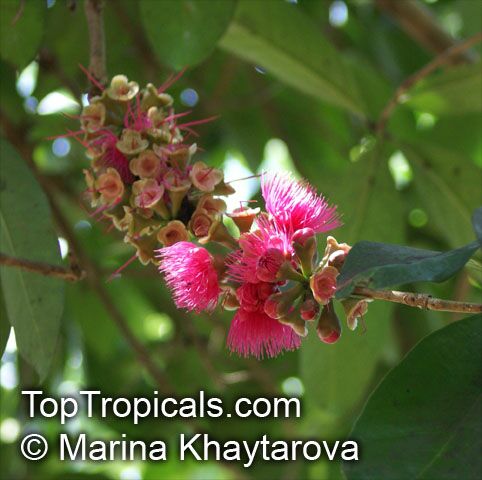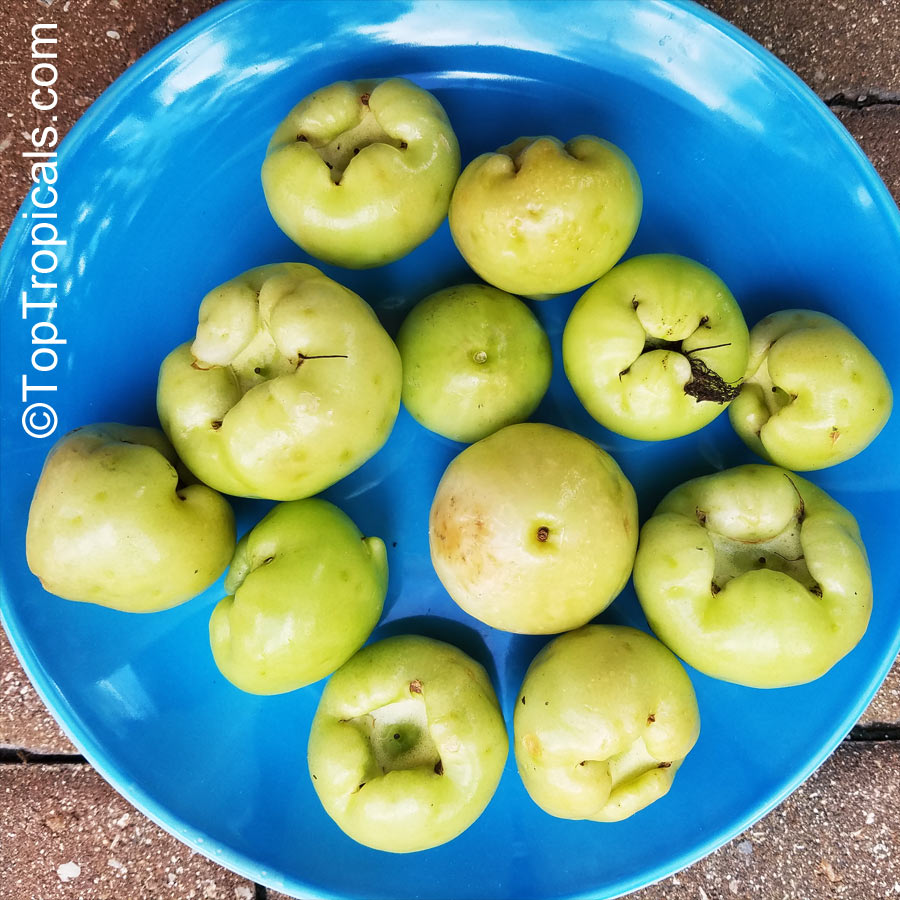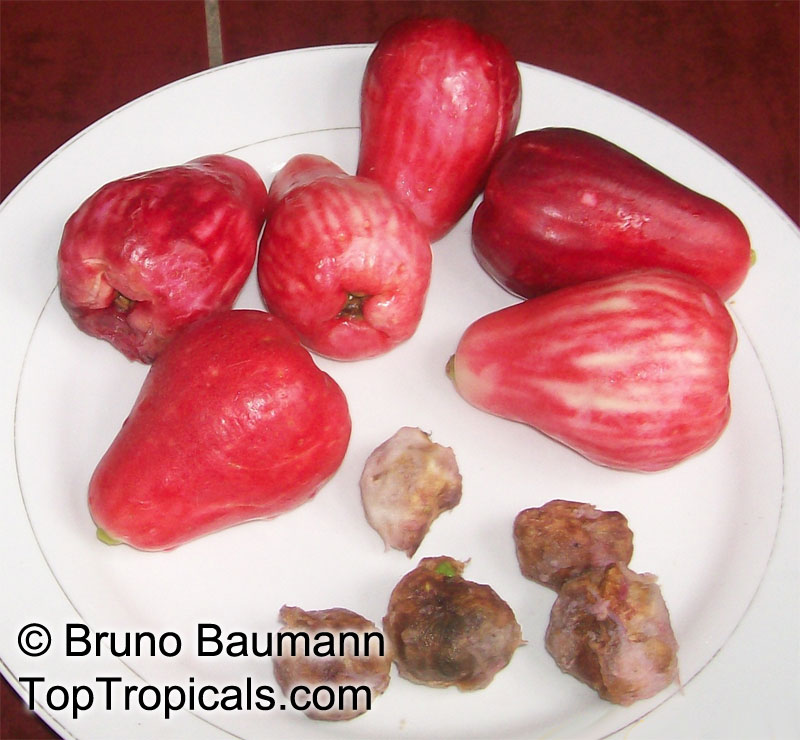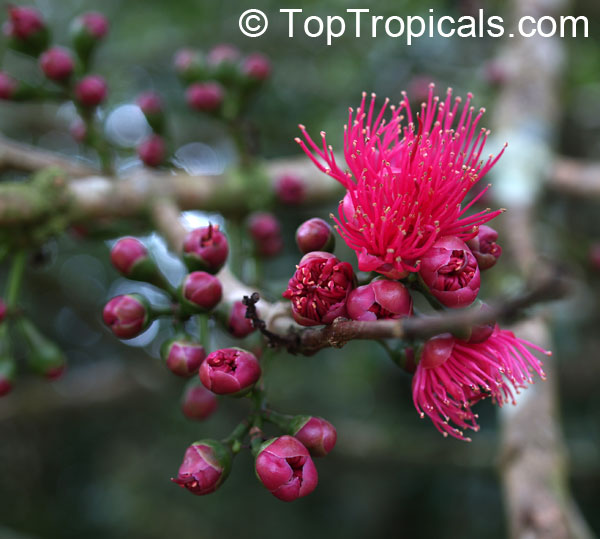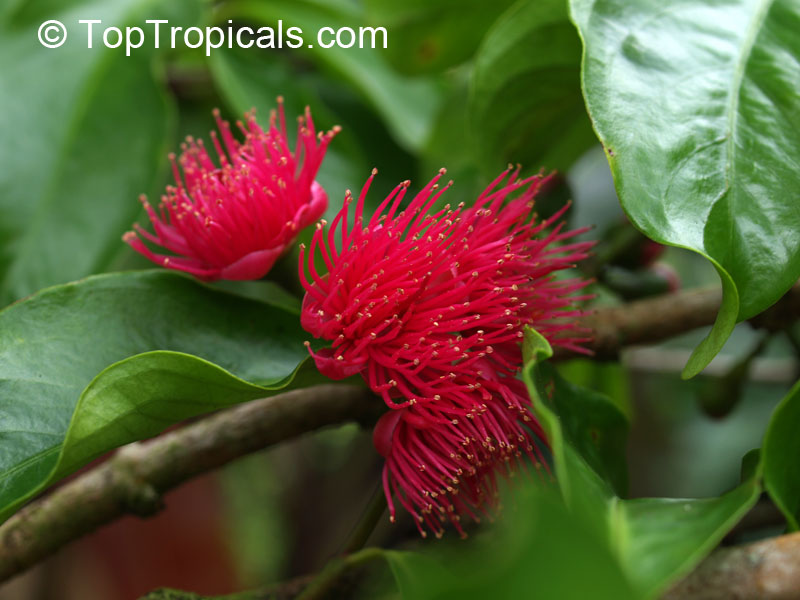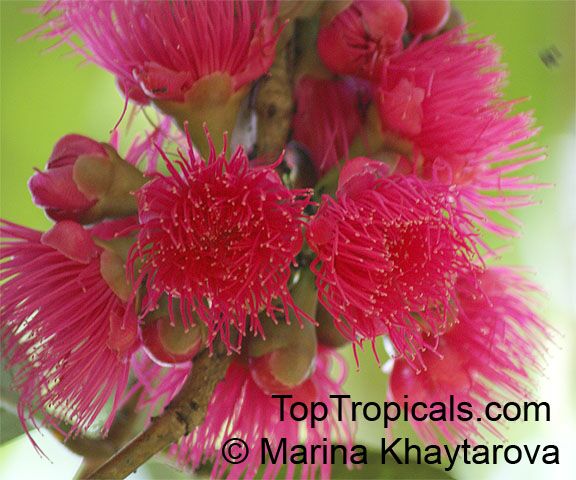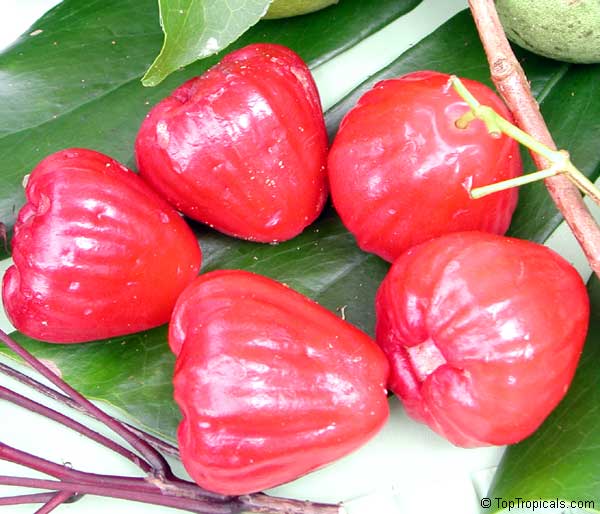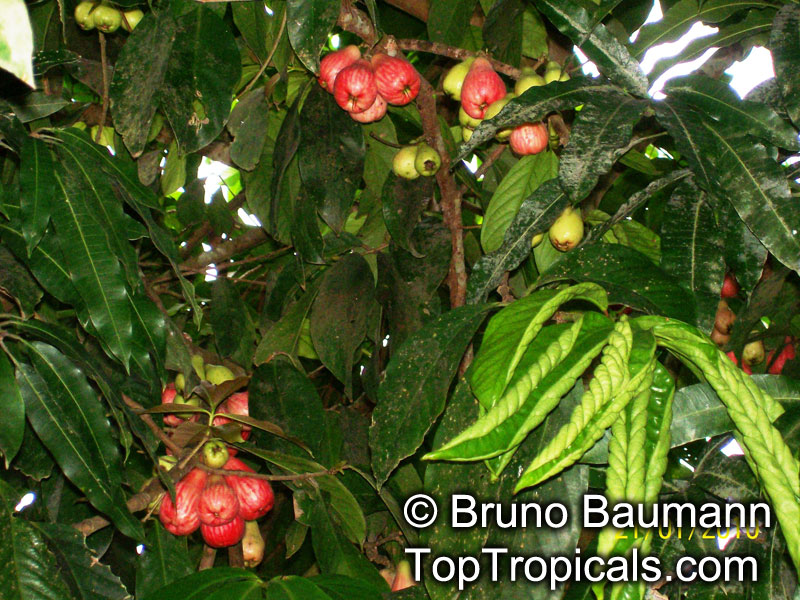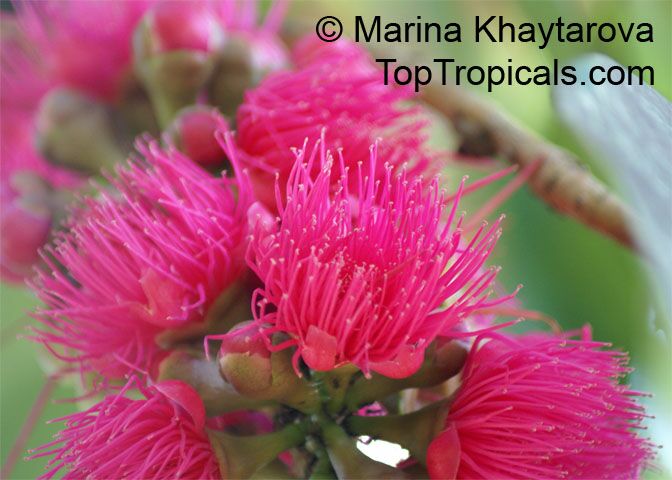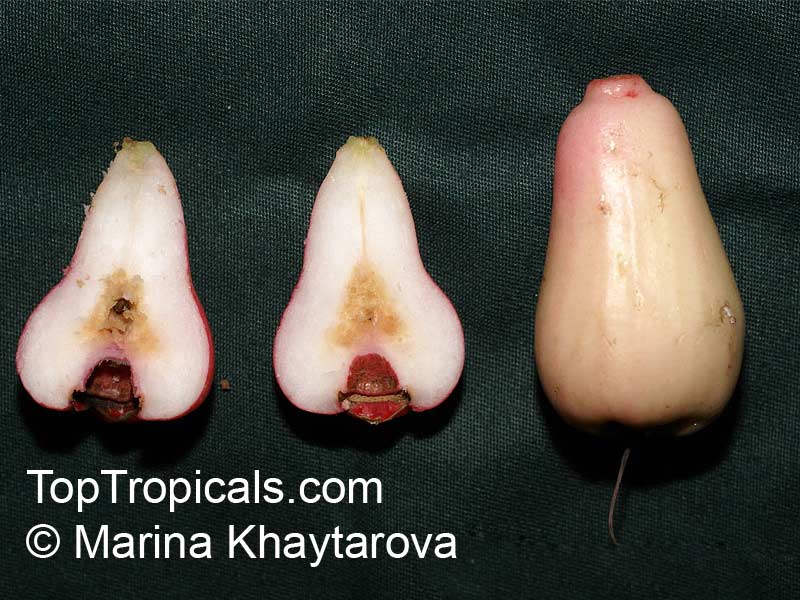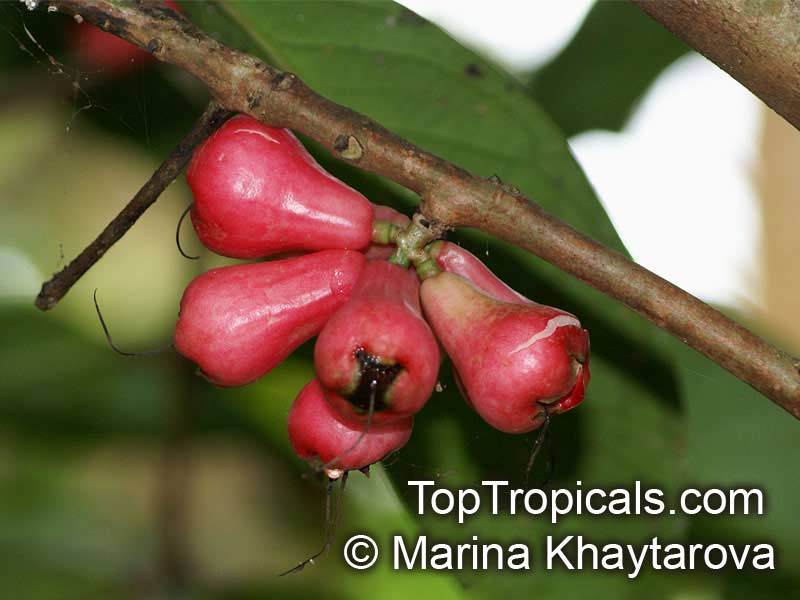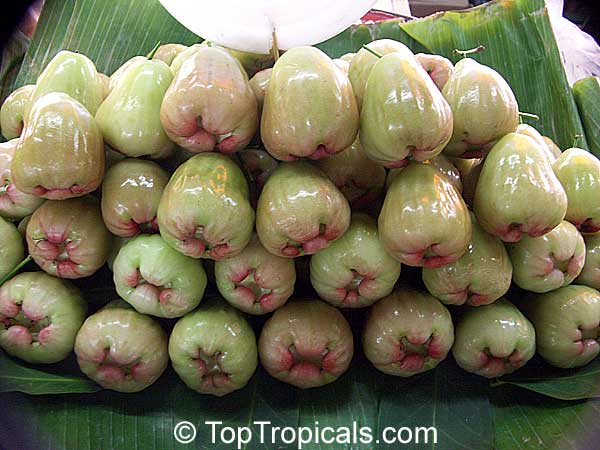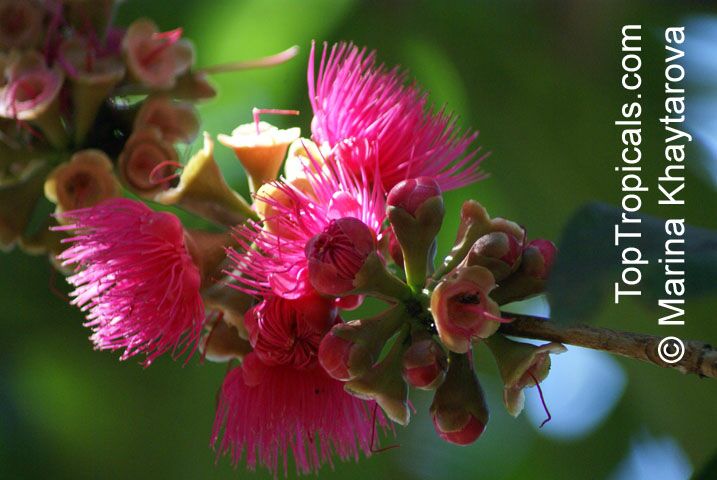Syzygium - Plant Encyclopedia Results
Top Tropicals Plant Encyclopedia
| Number of plants found: 19 | Next | 
|
Go to page: | 1 | 2 |
Botanical names: Syzygium antisepticum, Syzygium gratum, Eugenia glaucicalyx, Eugenia grata, Syzygium glaucicalyx
Common names: Kalaum, Malaruhat
Family: Myrtaceae
Origin: Southeast Asia








This species is similar to Syzygium zeylanicum however it differs in size (bigger tree), leaves are dark glossy green on topside with longer petioles and the white fruits are slightly smaller than those of Syzygium zeylanicum.
Botanical names: Syzygium aqueum, Eugenia aquea
Common names: Water Cherry, Watery Rose Apple
Family: Myrtaceae
Origin: Indonesia








The fruit is a fleshy yellow or red berry which is bell shaped, waxy and crisp.
Botanical names: Syzygium aromaticum, Caryophyllus aromaticus, Eugenia caryophyllata, Eugenia caryophyllus
Common names: Clove, Cloves
Family: Myrtaceae
Origin: Moluccas - Eastern Indonesia










The Latin word clavus means 'nail shaped', referring to the bud. The dried flower buds of this tree are the cloves of commerce and used medicinally for countless things. All parts of the tree are highly aromatic.
Cloves are an ancient spice and, because of their exceptional aromatic strength, have always been held in high esteem by cooks in Europe, Northern Africa and Asia. The tree is endemic in the North Moluccas (Indonesia). After the end of the Dutch monopoly (18th century), clove trees were introduced to other countries for cultivation. The first recorded use of cloves is by the Chinese in the 1st century B.C. In China. They were not only used for cooking but also for deodorization. During the Han dynasty (207 B. C. to 220 A. D.) those who addressed the Chinese emperor were required to hold cloves in their mouths to mask bad breath. The active ingredient, Eugenol, is still used to flavor the tooth paste. Arab traders brought cloves to Europe in the time of the Romans. At that time cloves were still very expensive. Clove first arrived in Europe around the 4th century A.D. as a highly coveted luxury.
The most important production area today is the island of Pemba near Zanzibar in Tanzania. The whole island of Pemba is covered with clove gardens, and it is reported that the island can be smelled on any ship approaching it.
In Europe cloves are used for special types of sweets or sweet breads, and for stewed fruits. Plain rice is often flavored by one or two cloves. In France, cloves often go into meat stews or broths. In England, they are most popular in pickles. Indonesians are the main consumers of cloves and use up nearly 50 percent of the world's production, not for cooking but rather for smoking. Cigarettes flavored with cloves (kretek) are extremely popular and nearly every Indonesian enjoys them. Their sweet, incense-like aroma pervades Indonesian restaurants, buses, markets and offices.
Clove is much used in perfumes, liqueurs, and love potions. It has antiseptic properties and was used in the prevention of contagious diseases, such as the Plaque. Traditional Chinese physicians have long used the plant to treat almost everything. India's traditional Ayurvedic healers have used clove since ancient times to treat respiratory and digestive ailments. The medieval German herbalists used cloves as part of anti-gout mixture. Contemporary herbalists recommend clove for digestive complaints and its oil for toothache. However, clove oil shouldn't be used in massaging or in baths, it may irritate the skin.
Clove is an ultra-tropical small size tree which will not survive temperatures below 50F. It requires a humid, warm tropical climate with lots of water year-round. It can be grown in greenhouse outside of tropics. Indoor cultivation is problematic mostly because of lack of air humidity that this plant needs for successful growth.
Botanical name: Syzygium australe
Common name: Scrub Cherry
Family: Myrtaceae
Origin: Australia







The species formerly known as Eugenia australis is now regarded as two separate species, Syzygium australe and Syzygium paniculatum.
Botanical names: Syzygium campanulatum, Syzygium myrtifolium, Eugenia oleina
Common name: Wild Cinnamon
Family: Myrtaceae
Origin: Southeast Asia






Syzygium campanulatum or Wild Cinnamon is a small tree native to Southeast Asia, growing about 10-20 feet in height. It's a perfect choice for those looking for an attractive, fragrant ornamental tree. It is a sun-loving tree, requiring full sun exposure, and regular water.
The tree produces an abundance of white, off-white flowers, often tinged with red and crimson, or vinous. These fragrant flowers are a sight to behold, emitting an unmistakable cinnamon scent.
Wild Cinnamon is typically grown in hardiness zones 9-11, making it a great choice if you live in one of these zones. It grows well in soil that is both well-drained and slightly acidic. The tree prefers a mildly acidic soil pH of 6-6.5, but it is quite tolerant of a wide range of soil pH.
When planted in a pot, Wild Cinnamon can survive in colder climates. It needs regular watering, at least 2-3 times a week, to ensure that the soil does not dry out completely. Also, make sure to keep the soil cold, as the tree prefers temperatures between 55-65°F. You can also protect the tree in cold months by using mulch and insulating fabrics to guard it against frost.
The Wild Cinnamon tree is an excellent choice as an ornamental tree, providing fragrant flowers and leafy smell of cinnamon. With proper care and maintenance, this small tree is sure to make a great addition to any garden.
Botanical name: Syzygium contractum
Common names: Bois de Pomme, Bois Boeuf
Family: Myrtaceae
Origin: Mauritius







Syzygium contractum is a large shrub that can reach 5-10 feet tall and is native to Mauritius. It needs full sun to semi shade, and needs a moderate amount of water for optimal growth and health. It makes a great ornamental addition to most landscapes with its bright pink flowers appearing in the late spring and early summer. The bright edible berries which follow are purple in colour and reach 2cm in diameter.
When growing this plant, in colder parts of the country, it is best to keep Syzygium contractum in a pot. It needs to be moved inside or sheltered from the weather during the coldest months of winter. It prefers a well-draining soil, although it can tolerate more moisture if needed. It is recommended to water regularly and evenly in order to keep the soil moist.
Syzygium contractum is not only a beautiful addition to any landscape, but it can also provide many edible benefits. The edible fruit of the shrub contains high amounts of vitamin C and is used to make jams and jellies. It is also considered to be a superfood due to its high amount of antioxidants, minerals and vitamins. It can even be used to make wine. Syzygium contractum can bear up to three fruits per branch and one plant can easily produce over ten fruits in a season.
Overall, Syzygium contractum is a great ornamental plant to add to any garden. Its bright pink flowers, followed by edible fruits make it a great addition for any garden. It is easy to care for, just needing full sun to semi shade and regular water. Its edible benefits such as its high levels of vitamin c, minerals and antioxidants make it a great superfood, and it can easily produce up to ten fruits a season.
Botanical name: Syzygium cumini
Common names: Malabar plum, Java plum, Black plum, Jamun, Jaman, Jambul, Jambolan, Lilly Pilly, Duhat
Family: Myrtaceae
Origin: Southern Asia, Australia
Hardiness: 20°F







Java plum, is a flowering evergreen and tropical tree native in India, Burma, Ceylon, Pakistan, Philippines, and Indonesia. It has been introduced in Cook Islands, Fiji, French Polynesia, Guam, Hawai i, Florida, New Caledonia, Niue, Palau, Tonga, China, Indonesia, Malaysia, Christmas Island, Australia, Africa, India, Caribbean, and South America. It was introduced to Florida in the 1920s.
It produces dark purple to black fruit with off-white flesh that can be used for jam, vinegar, etc but can be astringent if not fully ripe. Fruit matures in 90 days. Fruits are highly perishable. Fruits change their color from green to deep red or bluish black. This is a non climacteric fruit hence it dees not ripen after harvesting. Fully ripe fruits are harvested daily by hand picking or by shaking the branches and collecting the fruits on a polythene sheet. Needs a number of pickings, since all fruits do not ripen at a time. In India, the fruits are harvested by hand as they ripen and this requires several pickings over the season. Indian horticulturists have reported a crop of 700 fruits from a 5-year-old tree. The production of a large tree may be overwhelming to the average homeowner.
The jambolan tree is of real value in apiculture. The flowers have abundant nectar and are visited by bees (Apis dorsata) throughout the day, furnishing most of the honey in the Western Ghats.
The essential oil distilled from the leaves is used to scent soap and is blended with other materials in making inexpensive perfume.
Jambolan bark yields durable brown dyes of various shades depending on the mordant and the strength of the extract. The bark contains 8 to 19% tannin and is much used in tanning leather and preserving fishing nets.
The wood is water resistant. Because of this it is used in railway sleepers and to install motors in wells. It is sometimes used to make cheap furniture and village dwellings though it is relatively hard to work on.
This tree reaches 30ft and more in height in its natural habitat. It naturally occurs in loams, clays and sandy areas.
The tree is very vigorous, bushy and full, and can be also used as a fast growing ornamental, creating a dense privacy screen in just a couple of seasons.
Recommended Fertilizer: SUNSHINE C-Cibus - Crop Nutrition Booster
SUNSHINE-Honey - sugar booster
Botanical names: Syzygium jambos, Eugenia jambos, Jambosa jambos
Common names: Rose apple, Malabar Plum, Pomme rosa
Family: Myrtaceae
Origin: East Indies and Malaya










Rose Apple is a popular fruit native to Southeast Asia. The beautiful blossoms contain hundreds of showy stamens. The crisp and juicy fruits are very distinctly rose scented and highly prized for jellies and confections. The plant is easy to grow, moderately cold hardy and tolerates poor soils. Makes an attractive, wide-spreading shade tree as well as compact and bushy container fruiting plant.
See our video about Rose Apple.
Recommended Fertilizer: SUNSHINE C-Cibus - Crop Nutrition Booster
SUNSHINE-Honey - sugar booster
Botanical name: Syzygium luehmannii
Common name: Small Leaved Lilly Pilly
Family: Myrtaceae
Origin: Australia









Syzygium luehmannii, also known as Small Leaved Lilly Pilly, is a native plant to Australia. This small tree grows between 10-20 ft in height and can be used for bonsai. It prefers full sun to semi-shade and requires regular water, although it can tolerate moderate water. White to off-white flowers attract butterflies and hummingbirds from further distances. Grown in USDA Zone 9-11, this tree can be grown in both pot and soil in cold regions.
The fruit of the Syzygium luehmannii is edible and have a sweet-tart flavor. The fruit is full of antioxidants and can be used to make jams and preserves. As a healthy snack, the fruit can be eaten straight or used in salads or other recipes. Depending on the size, a single Syzygium luehmannii tree can produce between 10-20 pounds of fruit per year.
When growing the Syzygium luehmannii, it is important to protect it from the midday sun and provide regular water. It is also important to prune regularly, especially in the spring months, to maintain a desired shape. To enhance the fruits production, adding organic matter such as manure or compost to the soil will help the plant flower and produce fruit.
Botanical names: Syzygium malaccense, Eugenia malaccensis, Jambos malaccensis
Common names: Malay Apple, Macopa, Otaheite Apple, Pomarosa, Manzana
Family: Myrtaceae
Origin: Malaysia






Native to Malaysia, Malay Apple was an important fruit of the Polynesians, and was later distributed to the America's on Captain Bligh's voyages throughout the tropics, including many Caribbean countries such as Jamaica, Suriname, Dominican Republic, and Trinidad and Tobago. It has been also spread through much of southeast Asia and the Pacific islands, now common growing wild on the Hawaiian islands. It was brought into Hawaii by Polynesians probably 1000 to 1700 years ago. The Polynesians reached the Hawaiian islands bringing plants and animals that were important to them, and Mountain apple, as it is called in Hawaii, was one of the 'canoe plants'.
This plant grows to over 60 ft in tropics in mid-elevation rain forest areas, often as large understory tree. The evergreen leaves are opposite, soft leathery and dark green; the flowers are purplish-red and form a carpet after falling under the tree. Flowering usually occurs in early summer followed by fruit ripening 3 months later. The beautiful pear shaped fruit is about the size of an apple, deep red in color, white flesh and a waxy skin. The flesh is crunchy, often juicy, with a mild sweet flavor.
Fruit are mostly eaten fresh and chilled and make great thirst quenching snacks. The fruit can also be used to make wines. The plant has important medicinal value in many tropical countries.
Malay Apple requires tropical conditions and is too tender to grow outdoors in areas with even occasional frost. Often trees will have leaf damage at temperatures well above freezing. Trees also do not like poorly drained soils, so if planted in areas with high water tables should be planted on slightly raised mounds to give them more room for the roots during periods of high rainfall. It does not succeed as well at sea level. Other than that, it requires little care providing year-round water.
Recommended Fertilizer: SUNSHINE C-Cibus - Crop Nutrition Booster
SUNSHINE-Honey - sugar booster
| Next |  |
Use link to repeat this search:
https://toptropicals.com/cgi-bin/garden_catalog/cat.cgi?find=Syzygium&search_op=and&keyword_op=and&language=e&number=10
&no_change_lang=1&user=tt&sale=1&first=0
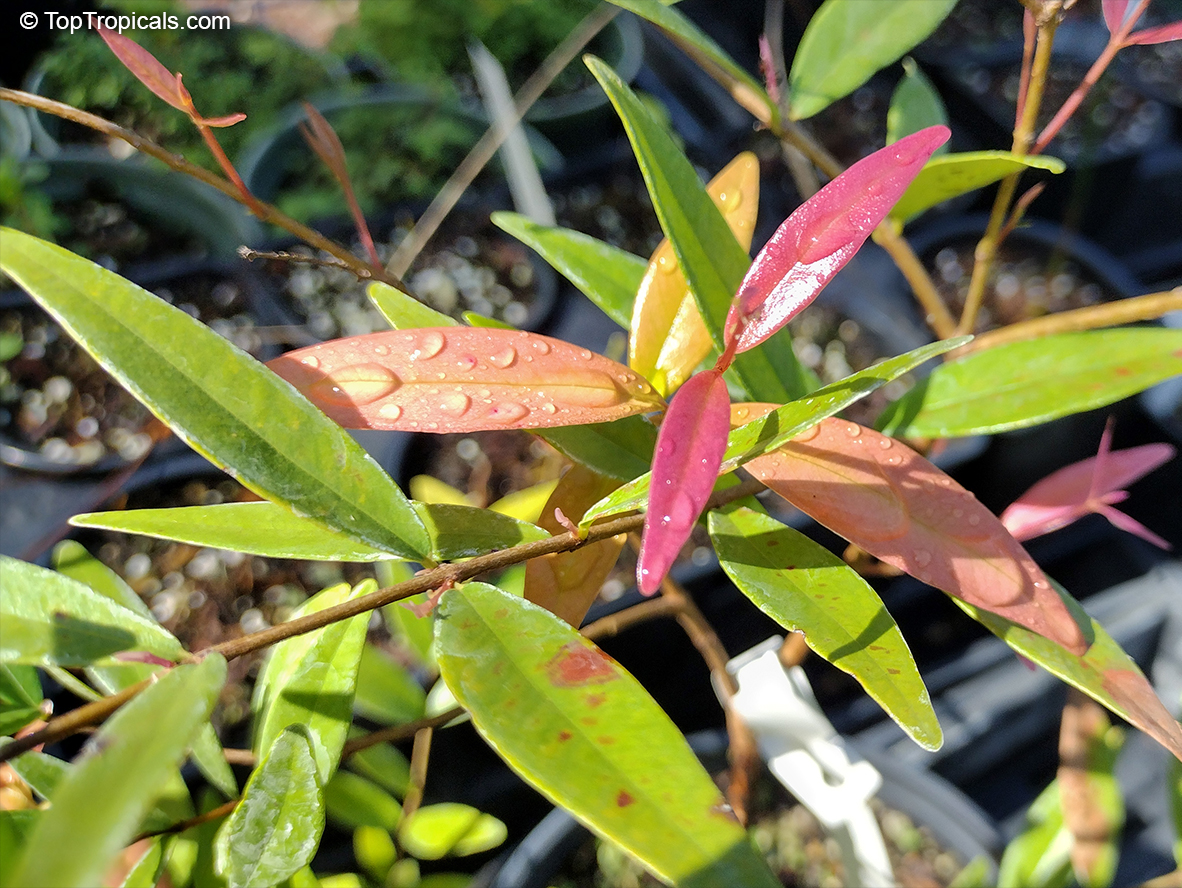
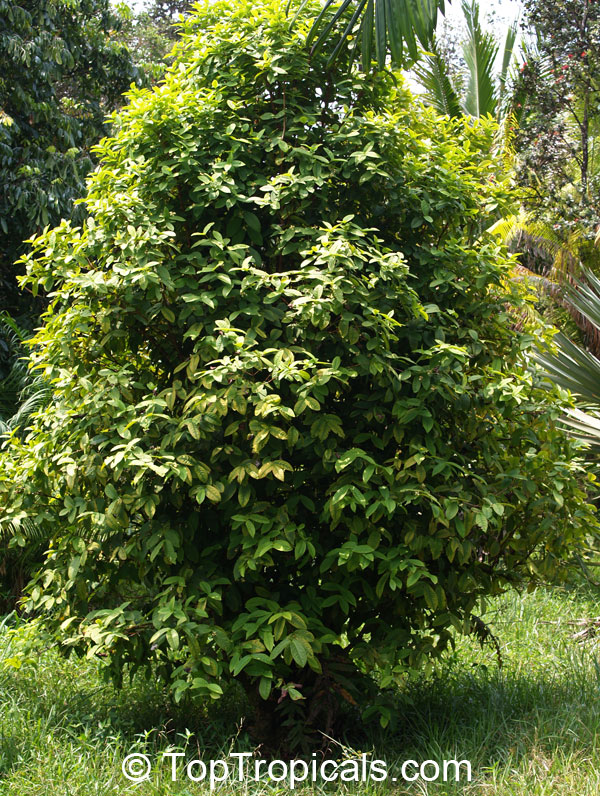
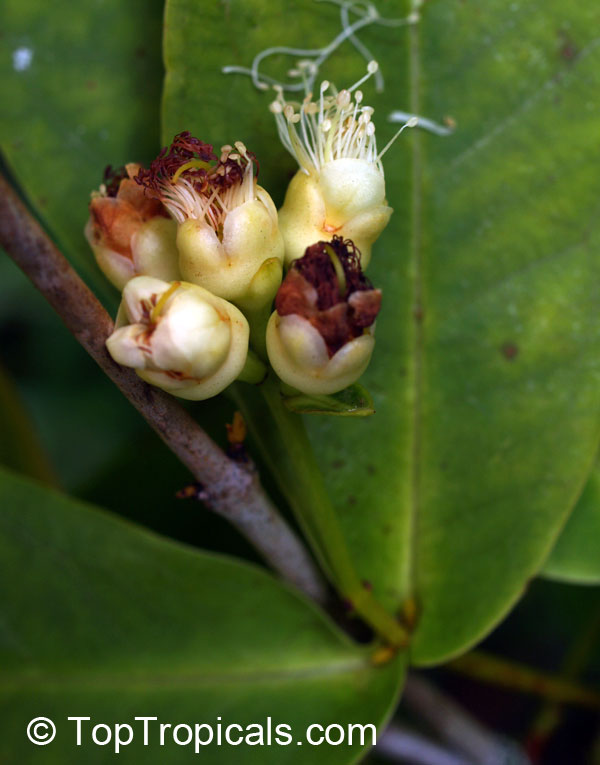
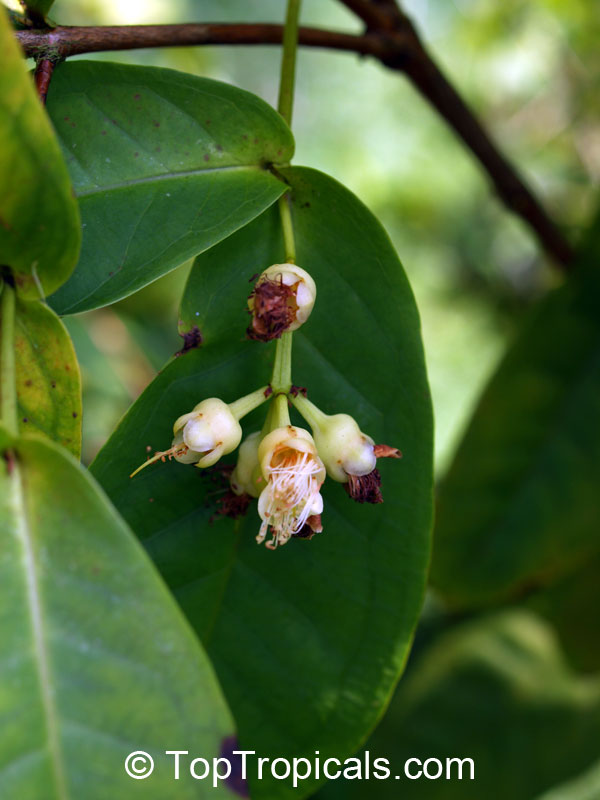
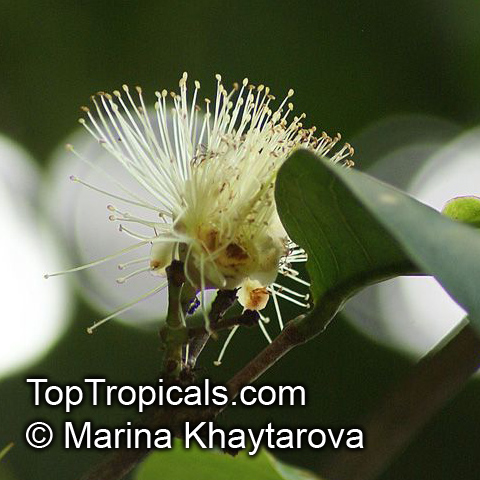
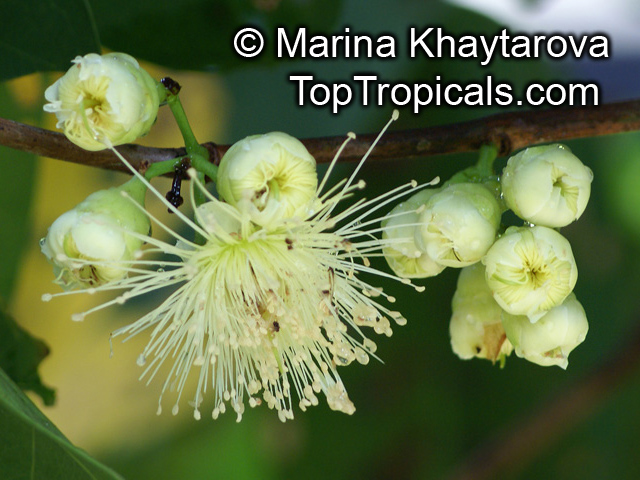
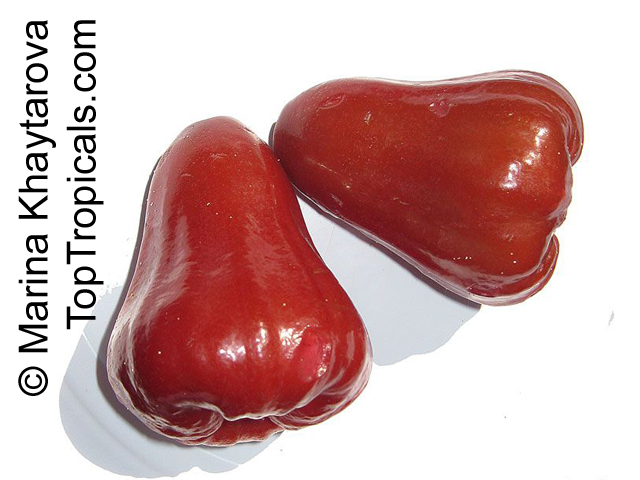
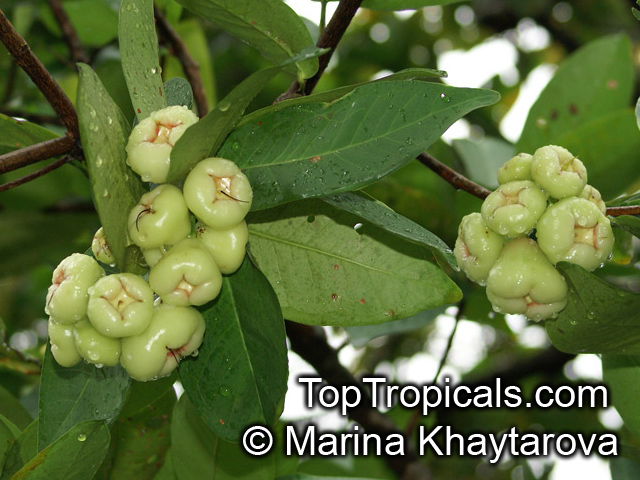
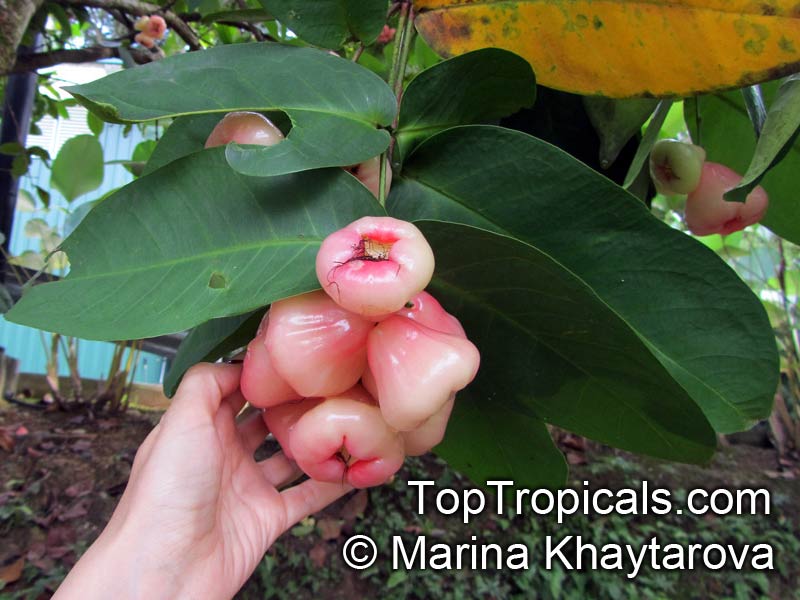
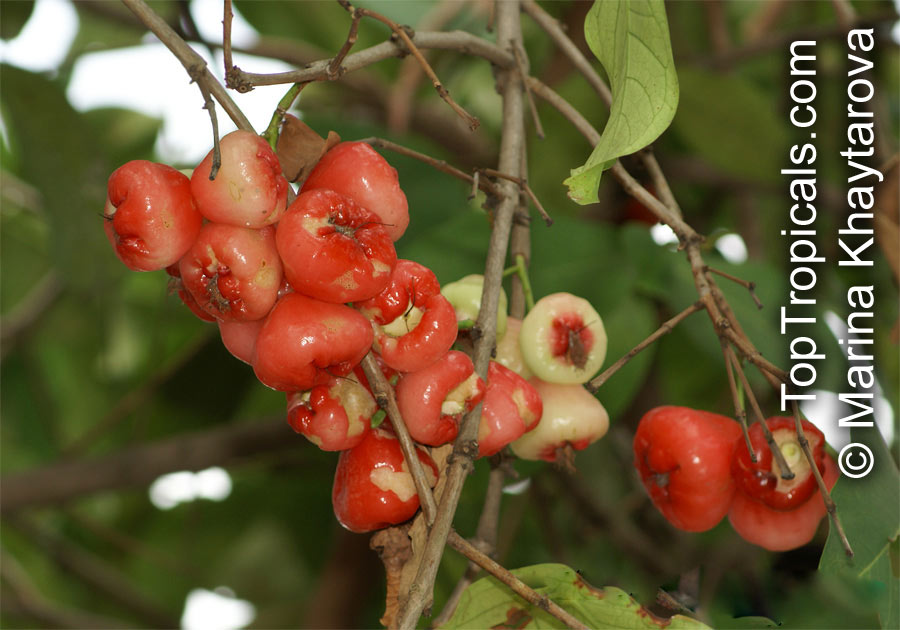
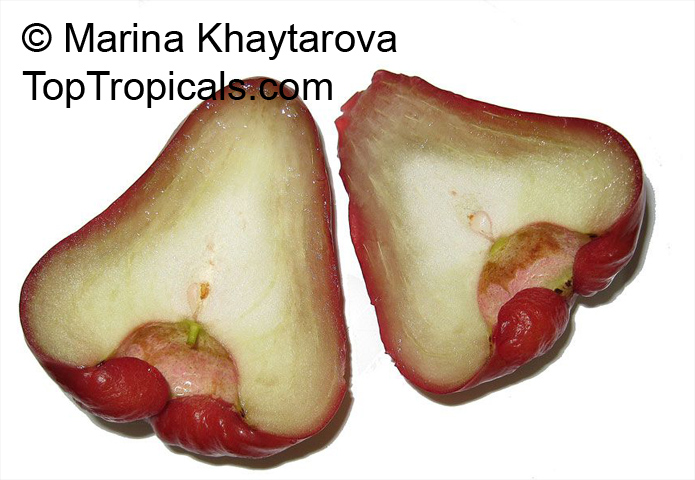
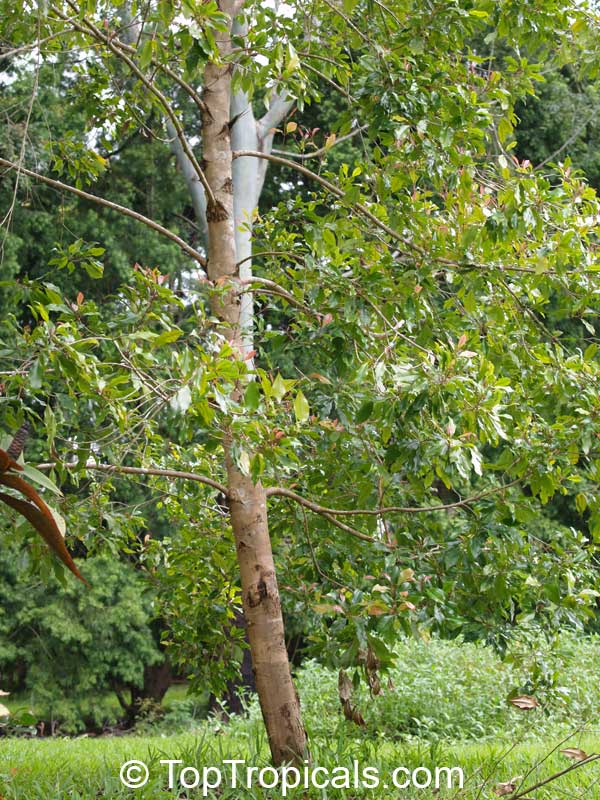
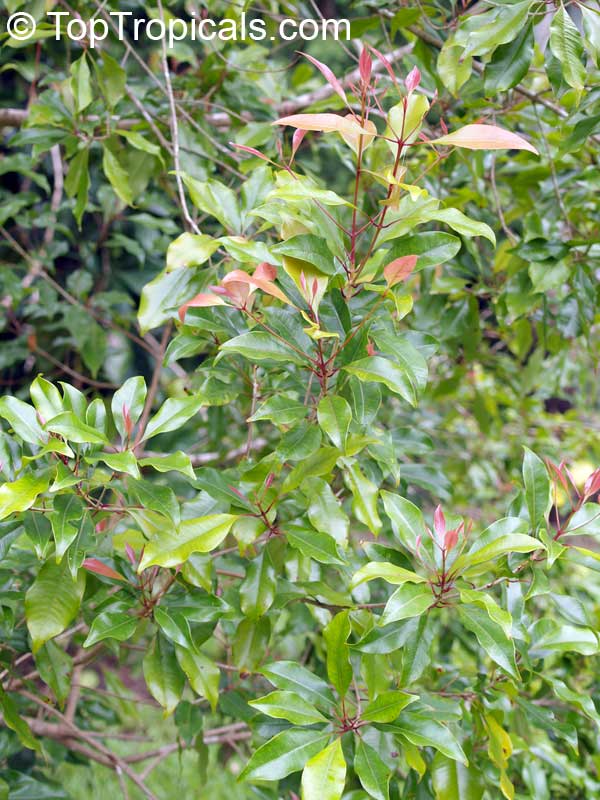
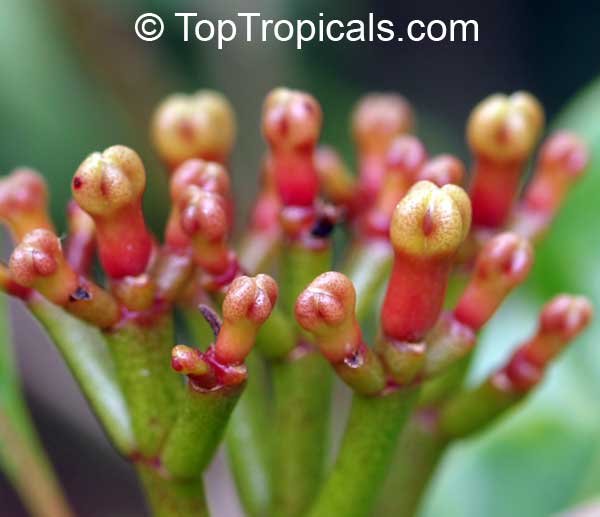
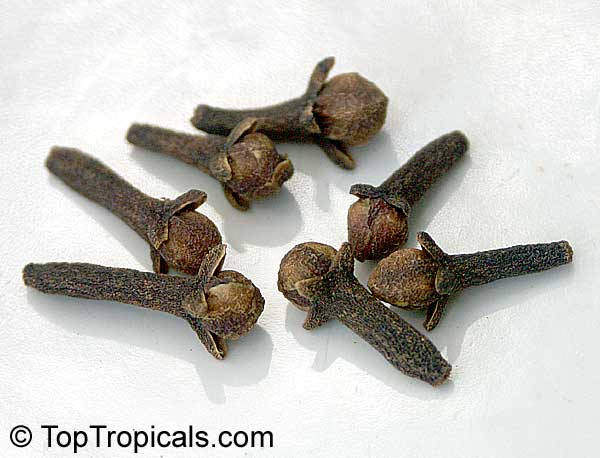
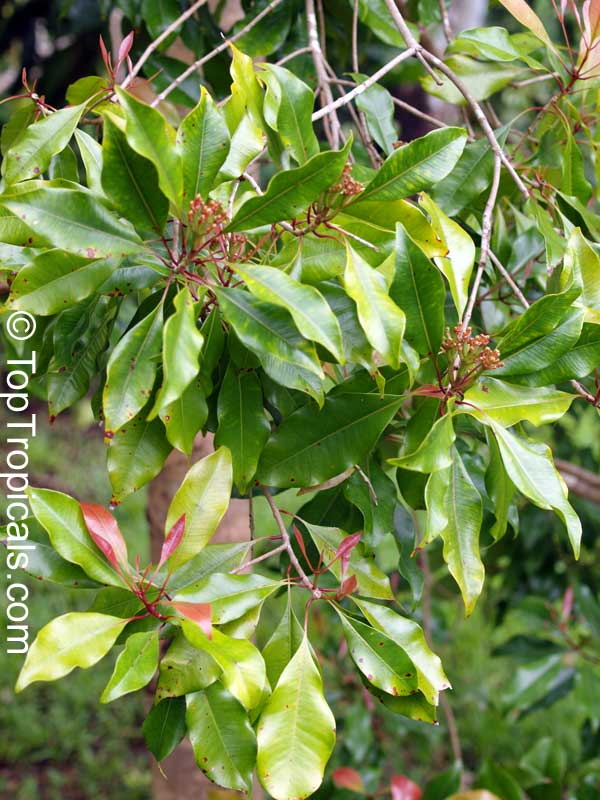
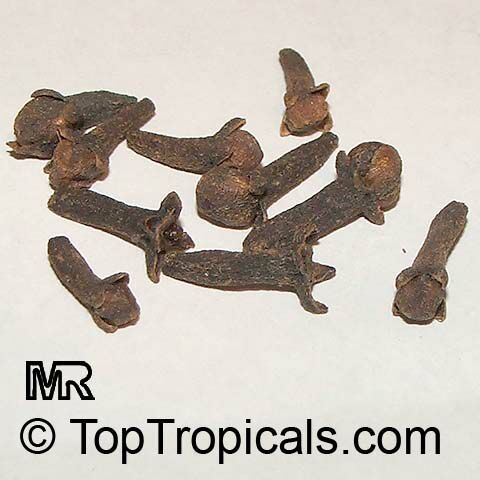
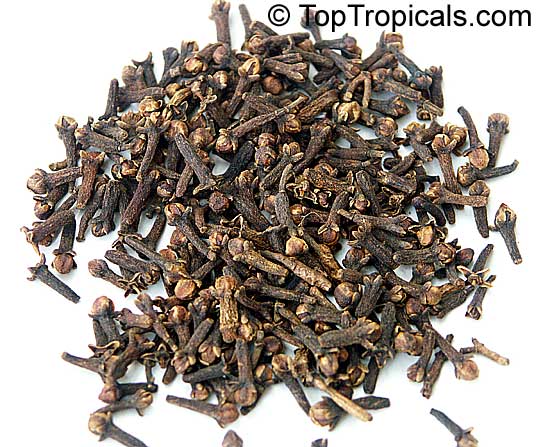
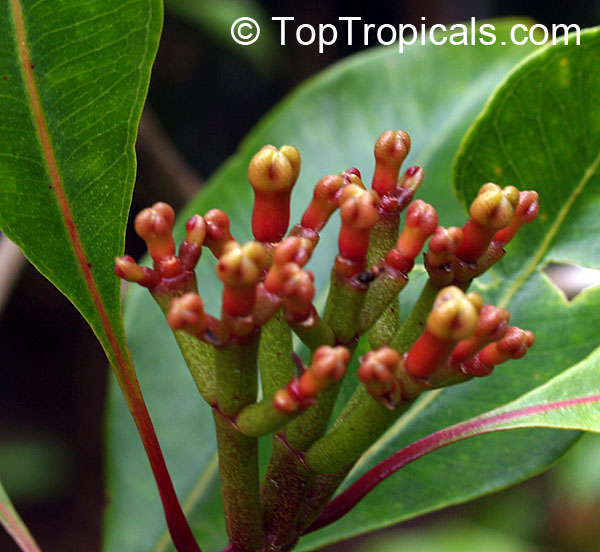
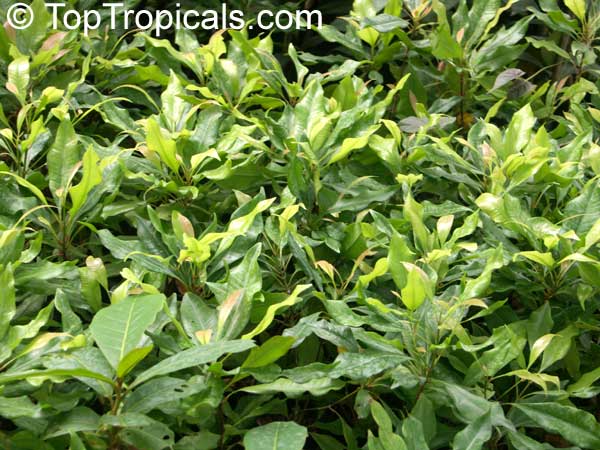
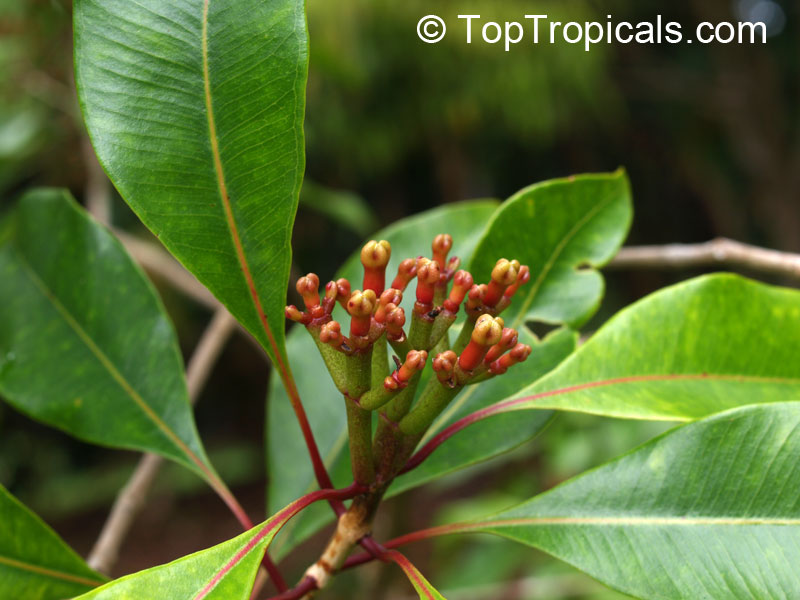

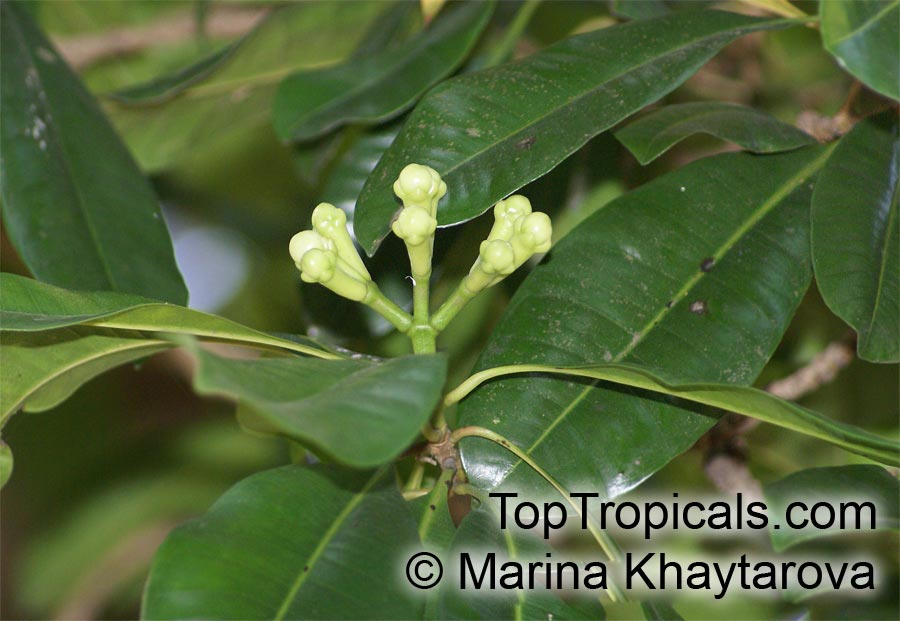
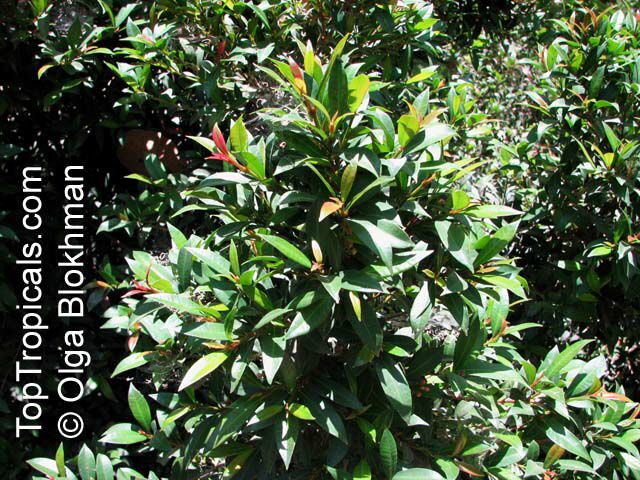
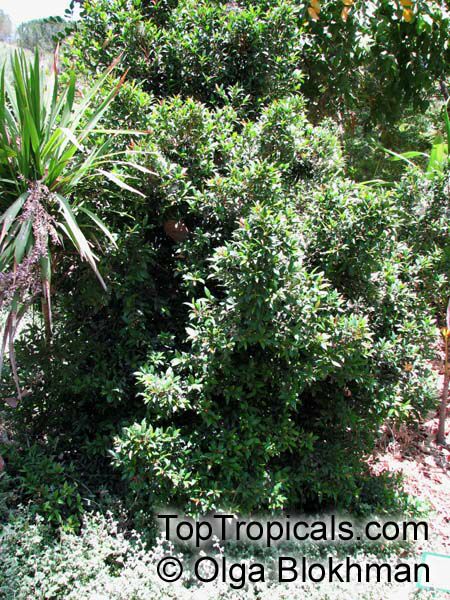
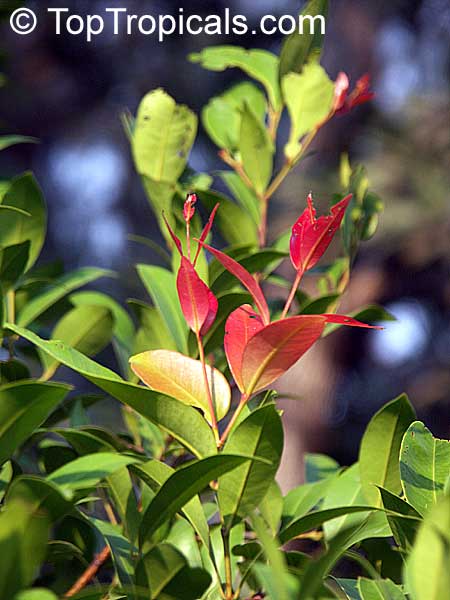
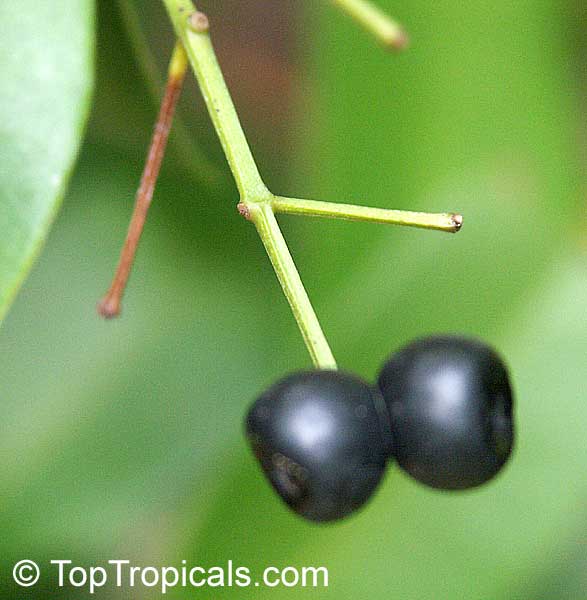
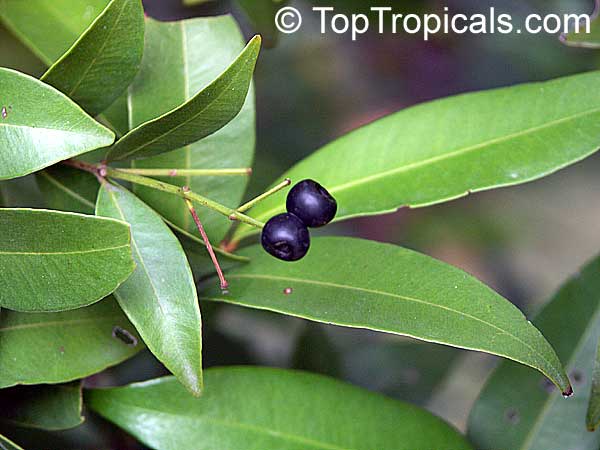
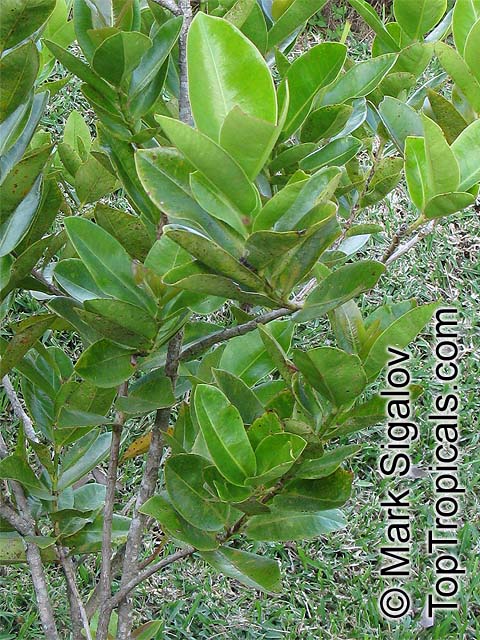
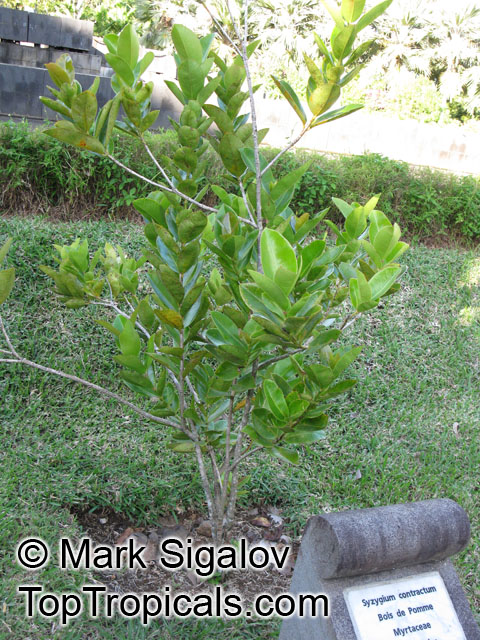
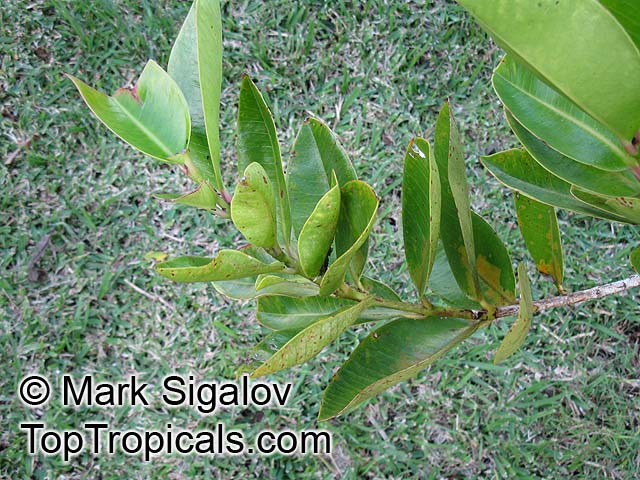
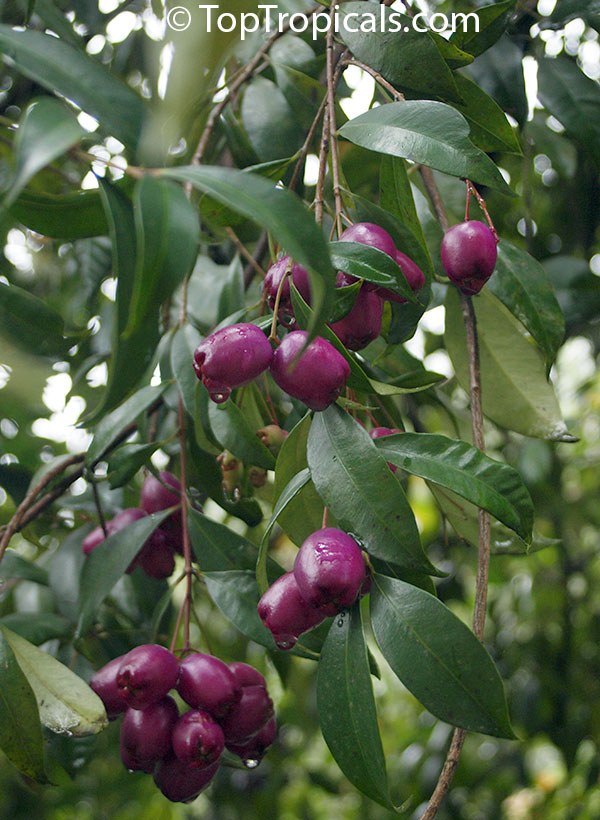
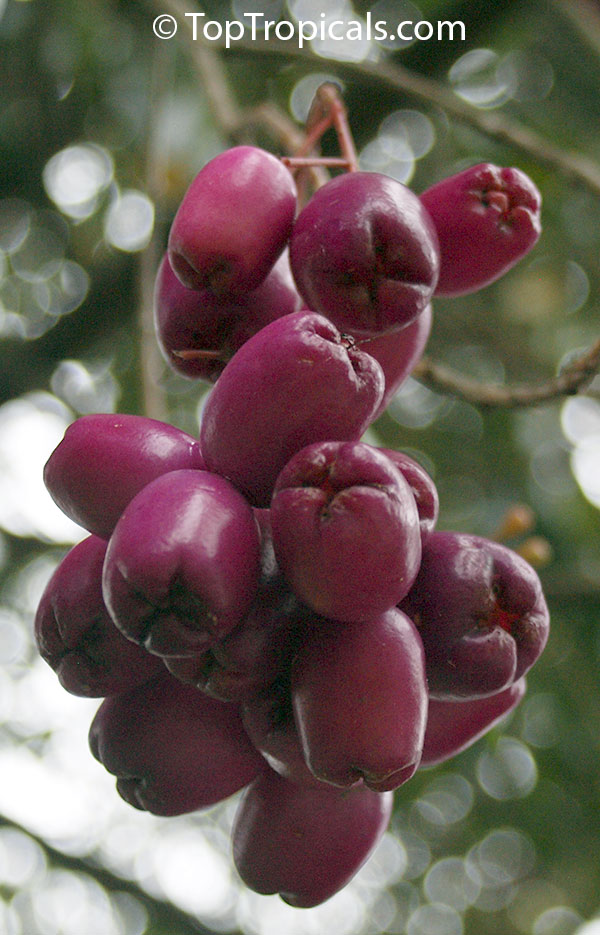
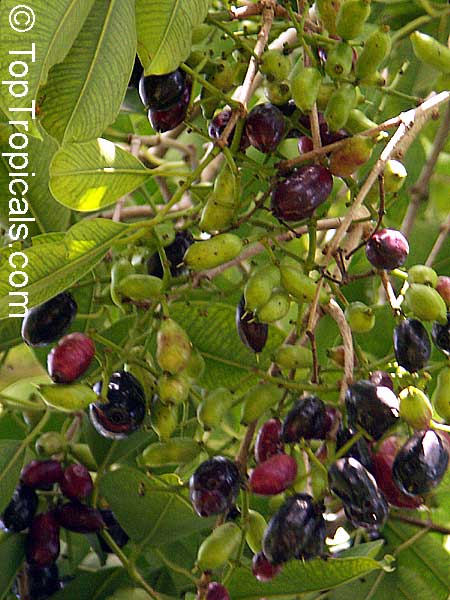
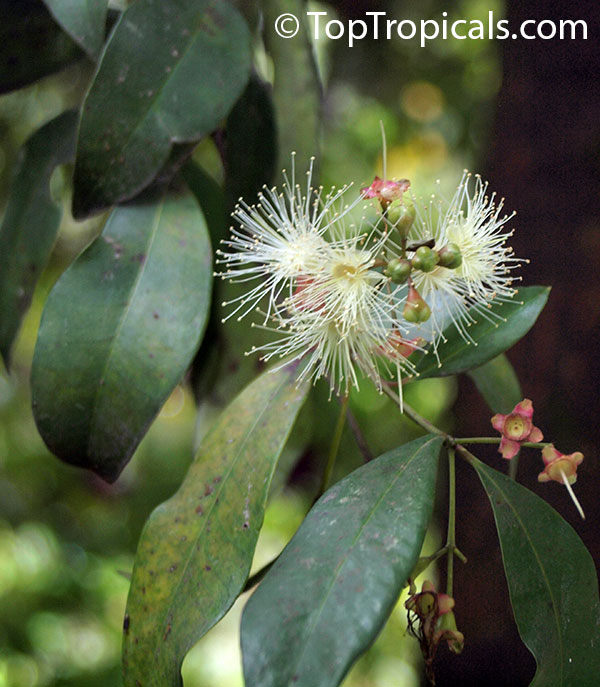
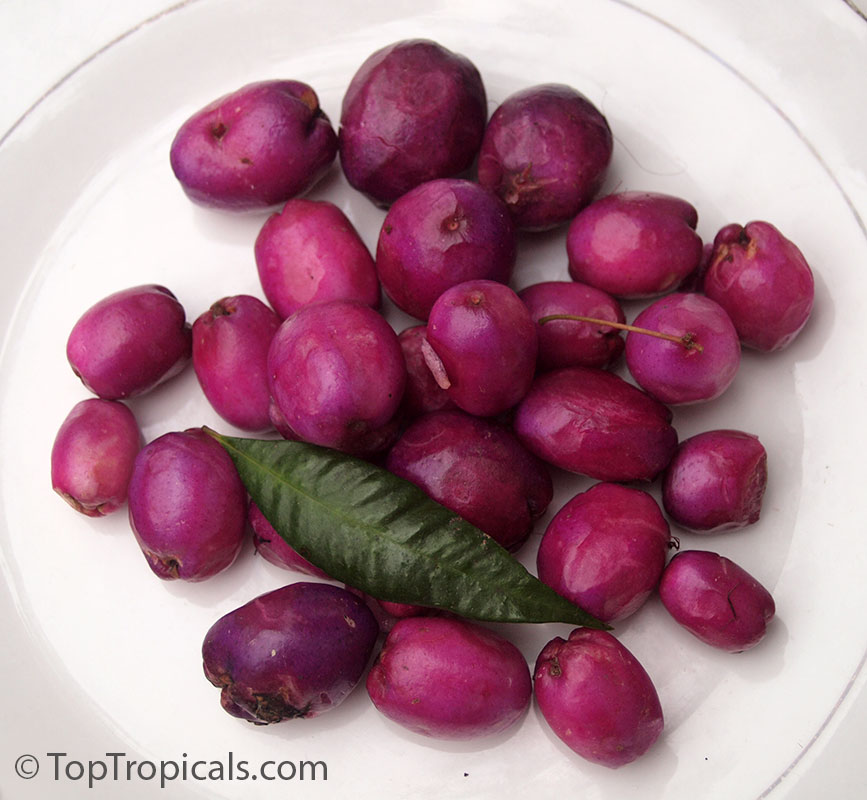

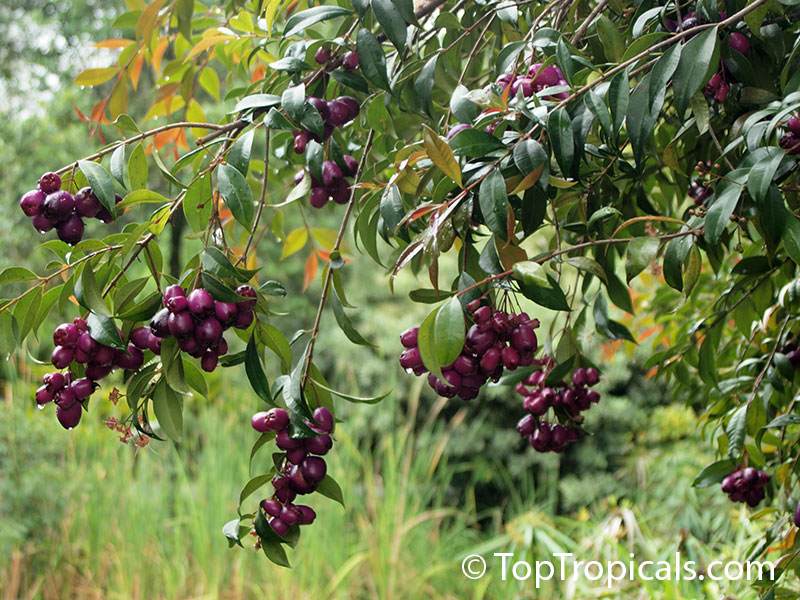
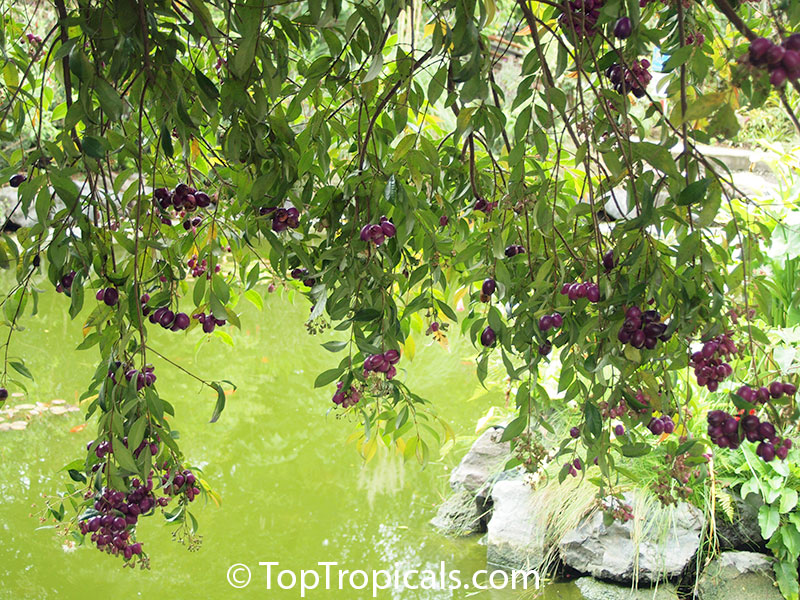
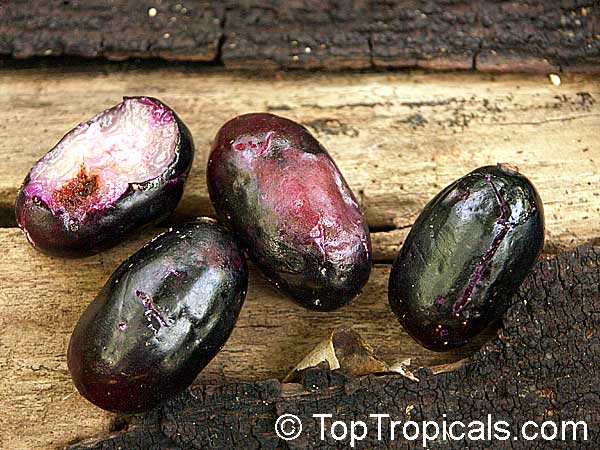
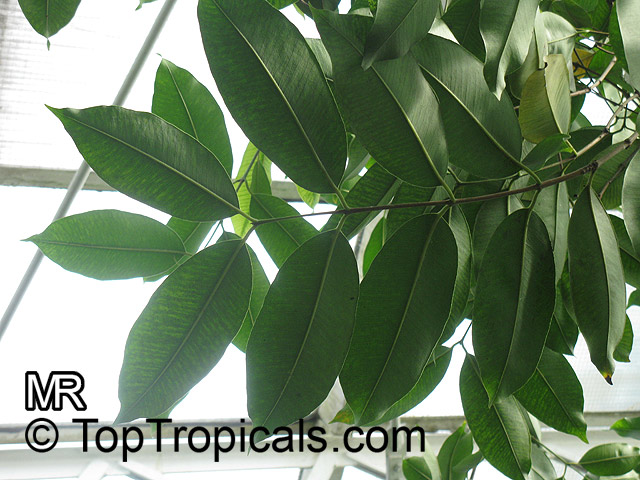
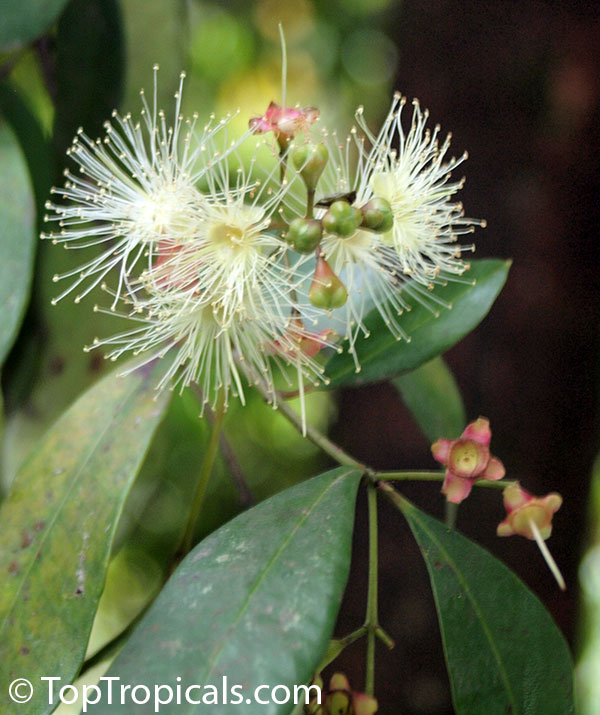
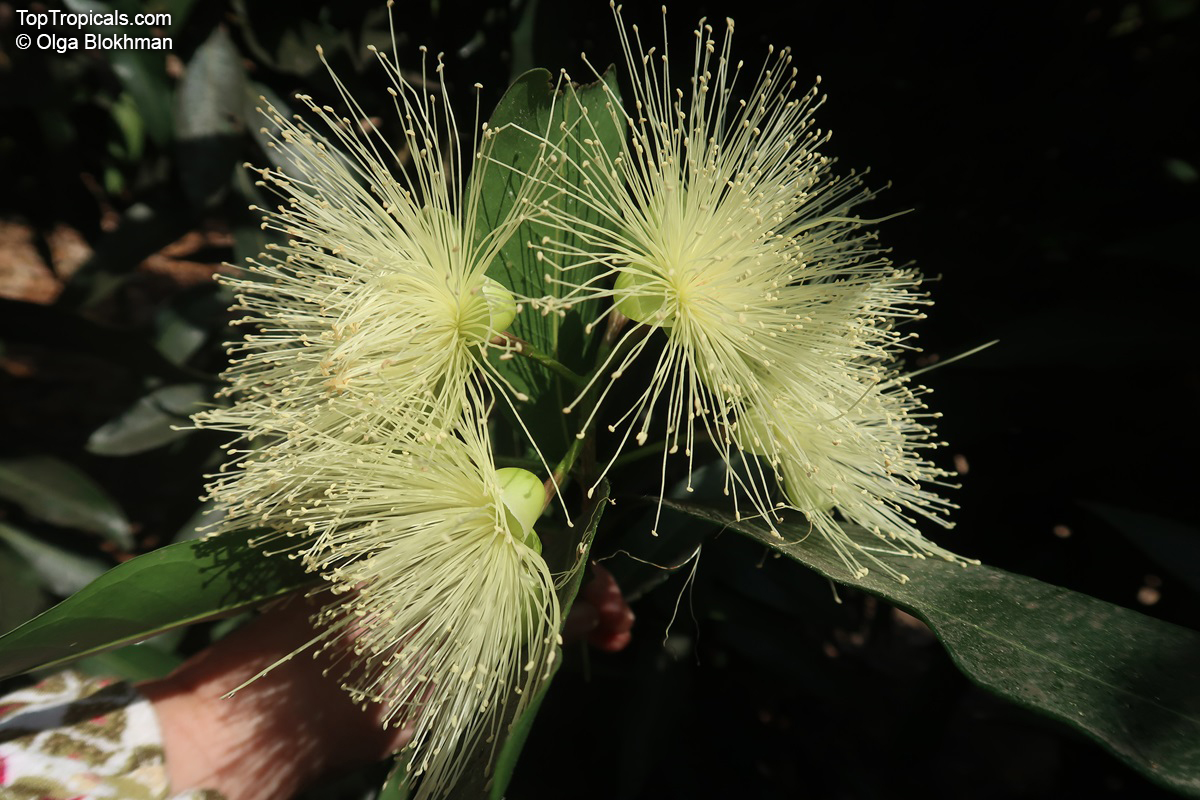
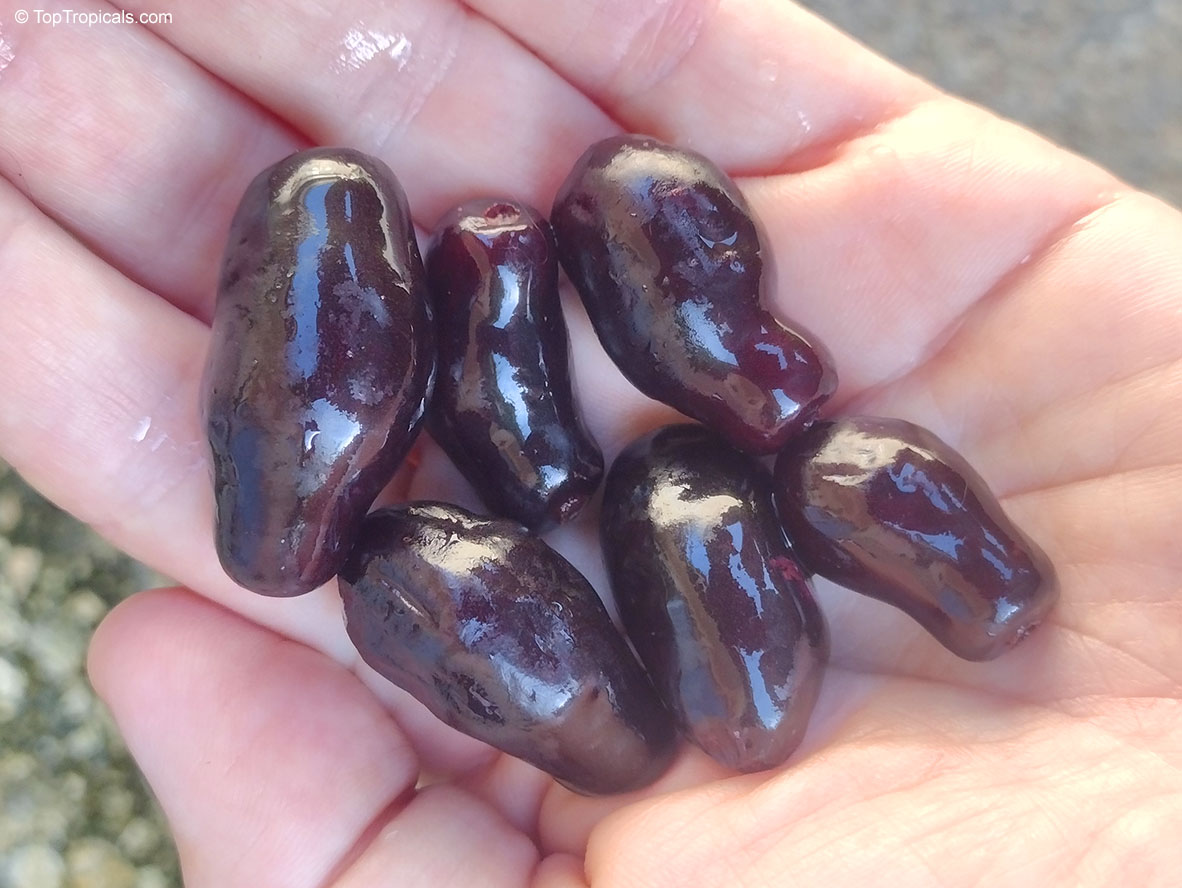
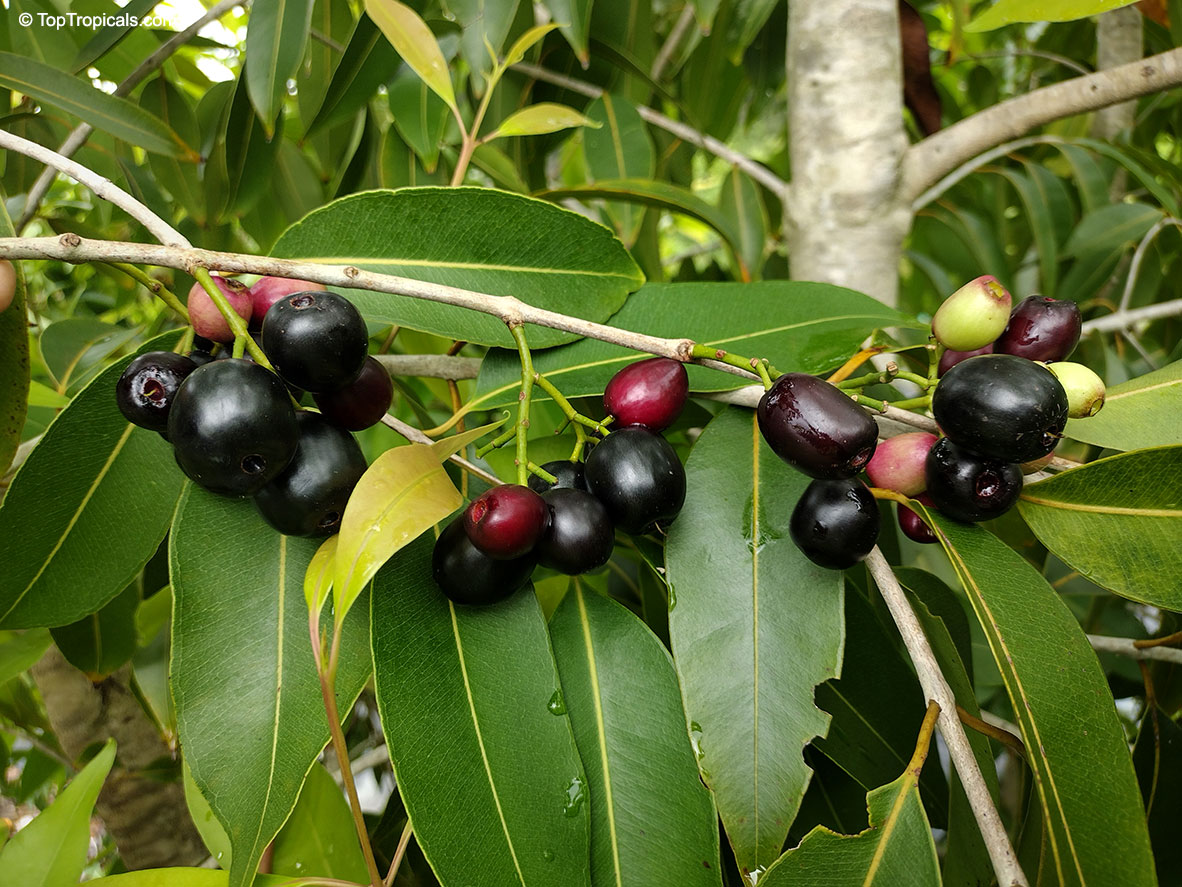
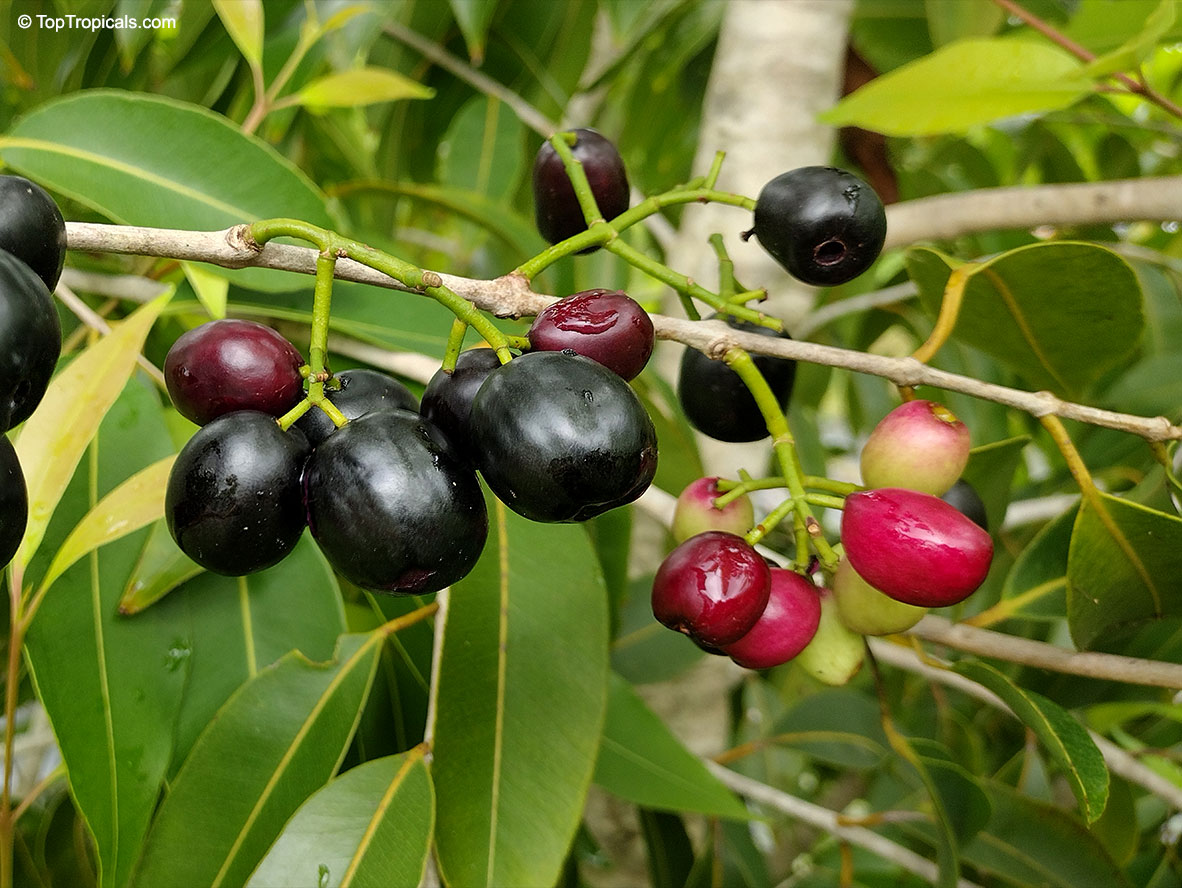
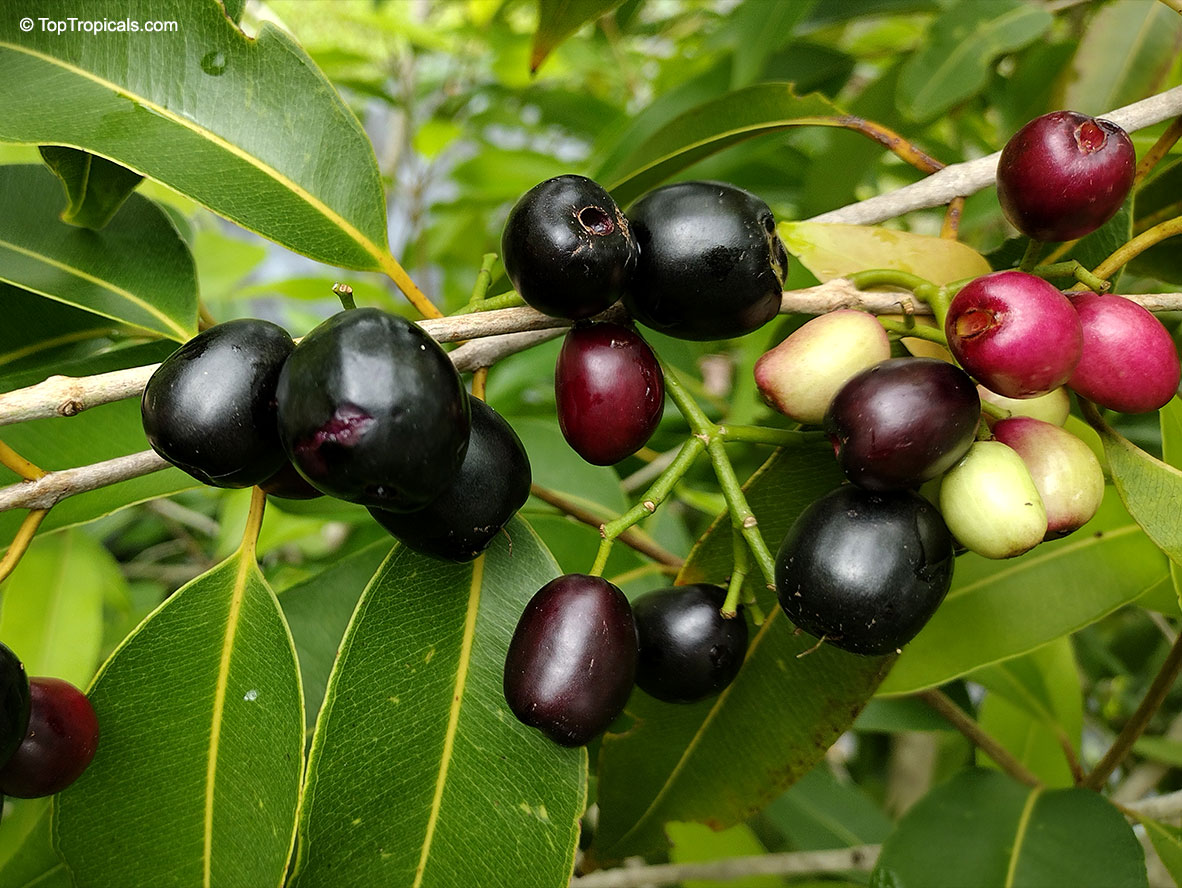
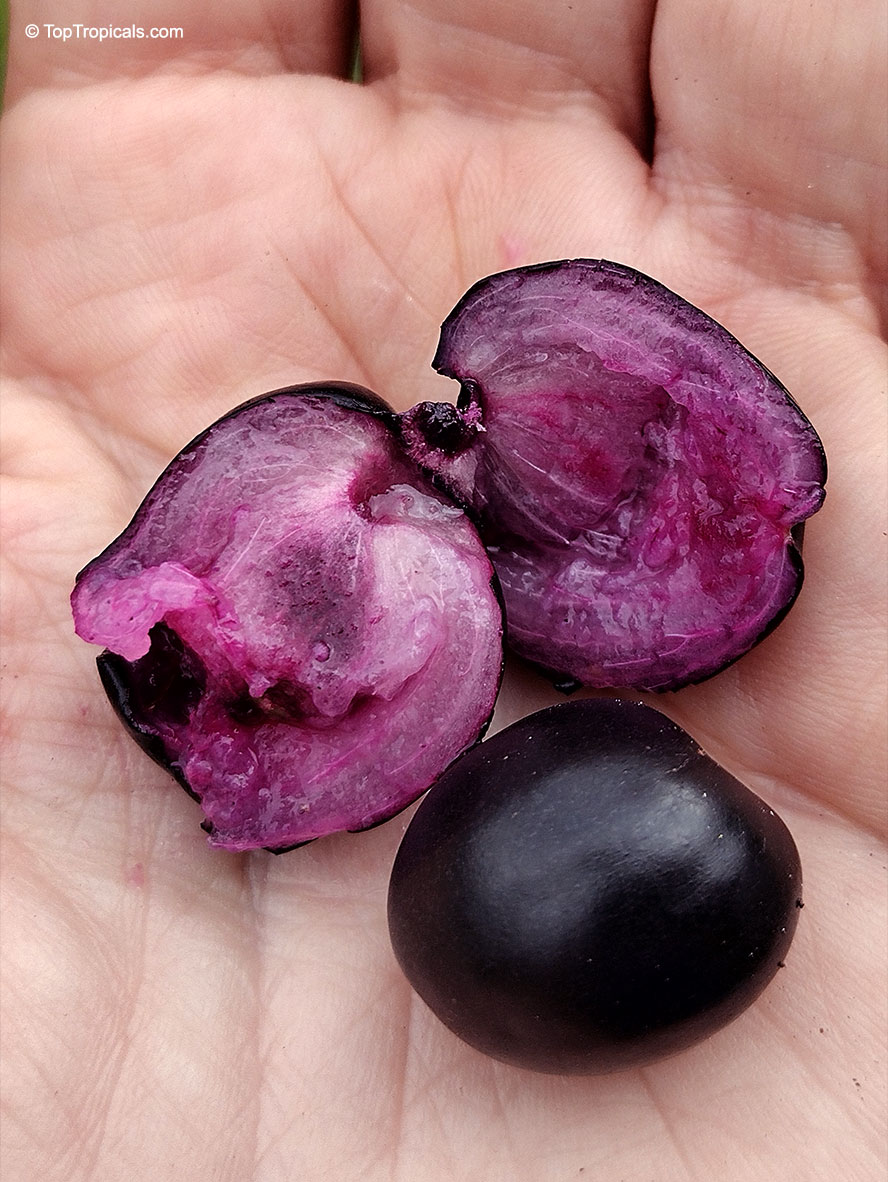


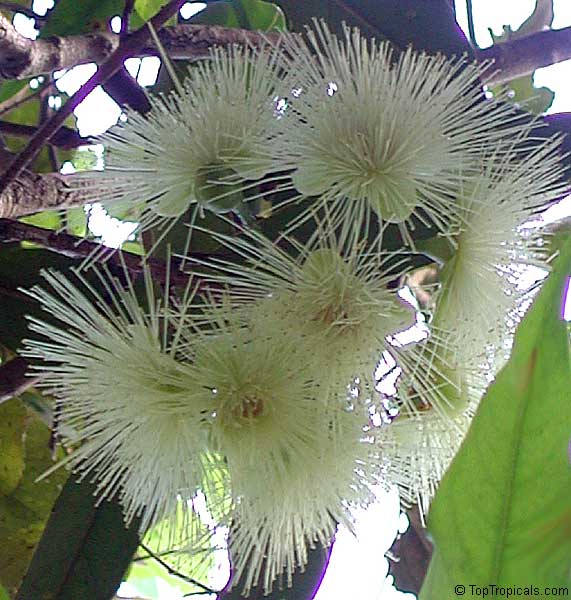
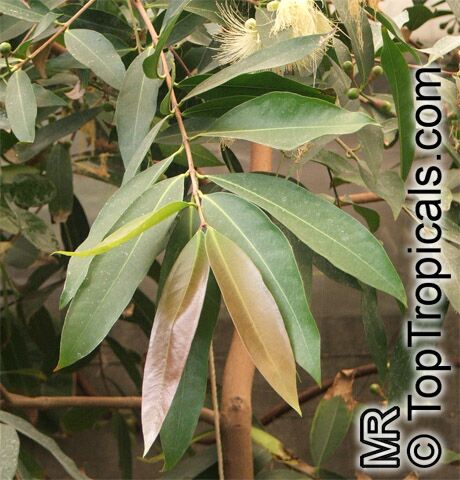
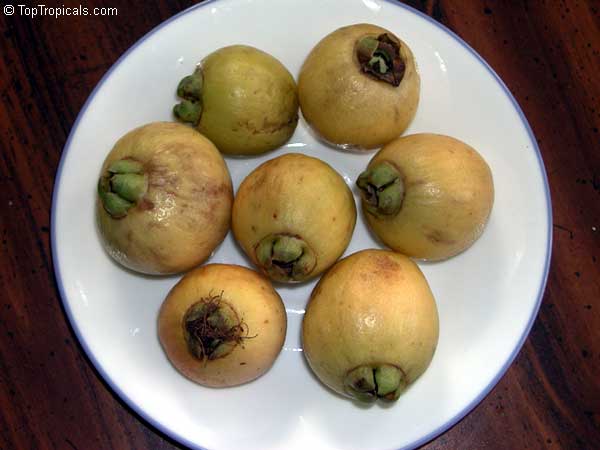
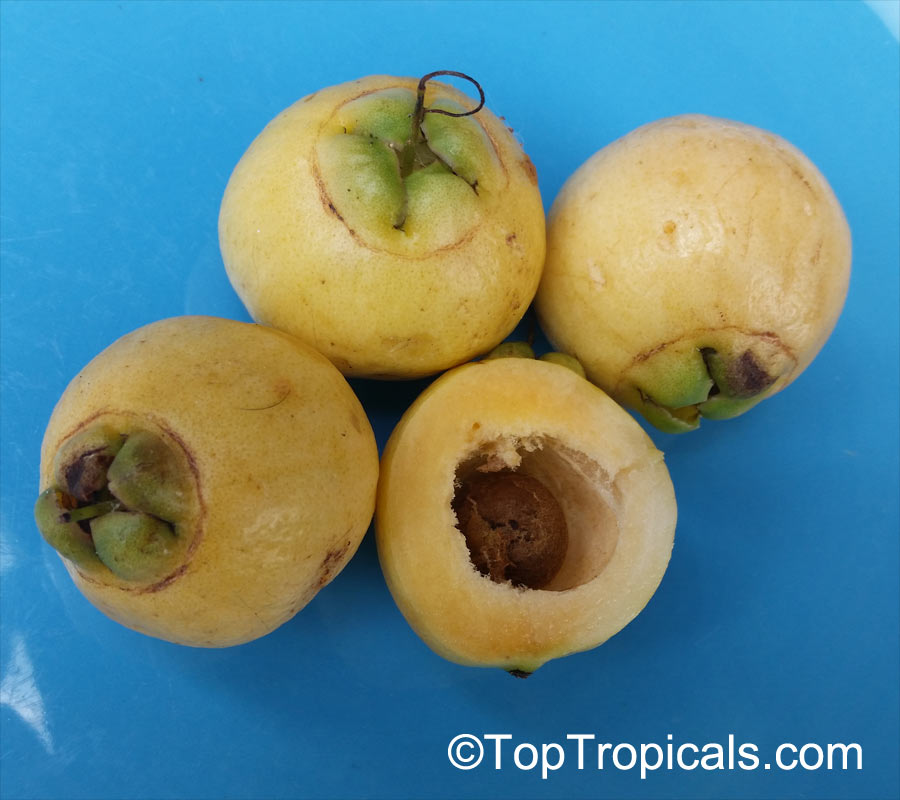

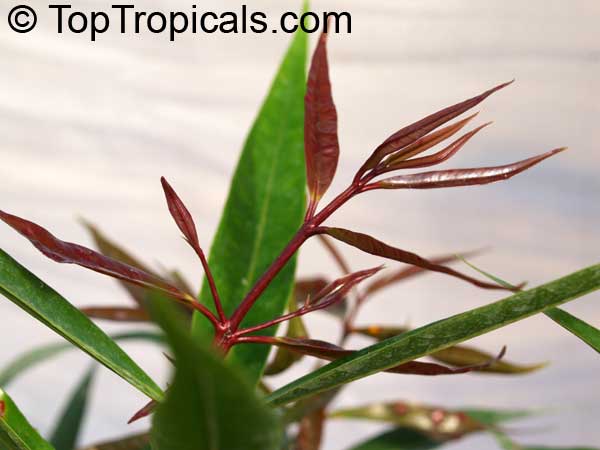
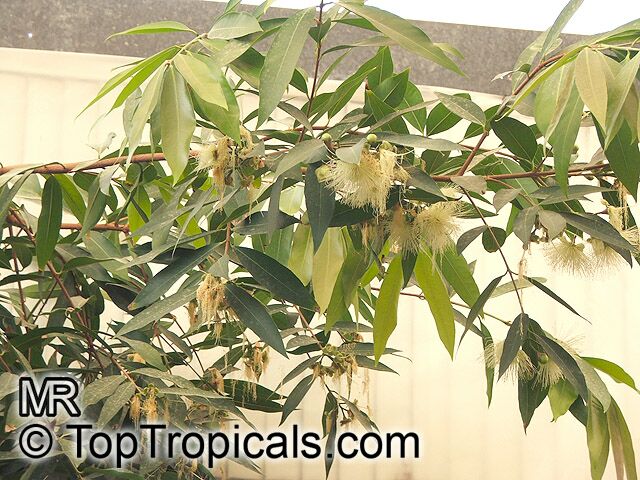

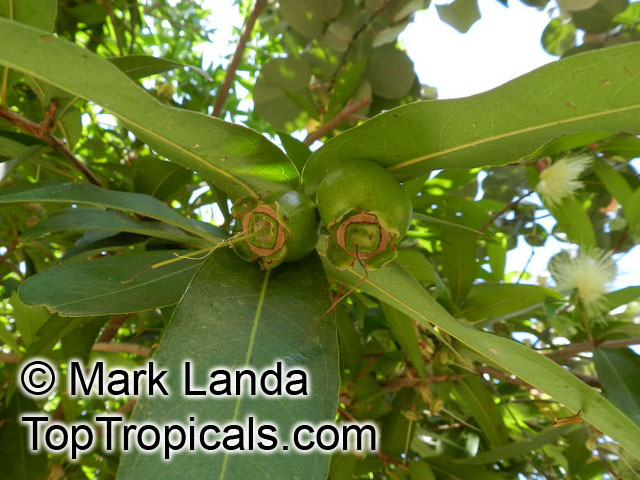
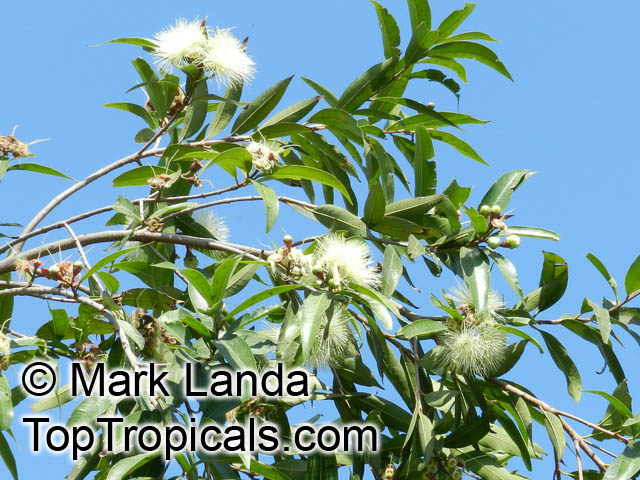
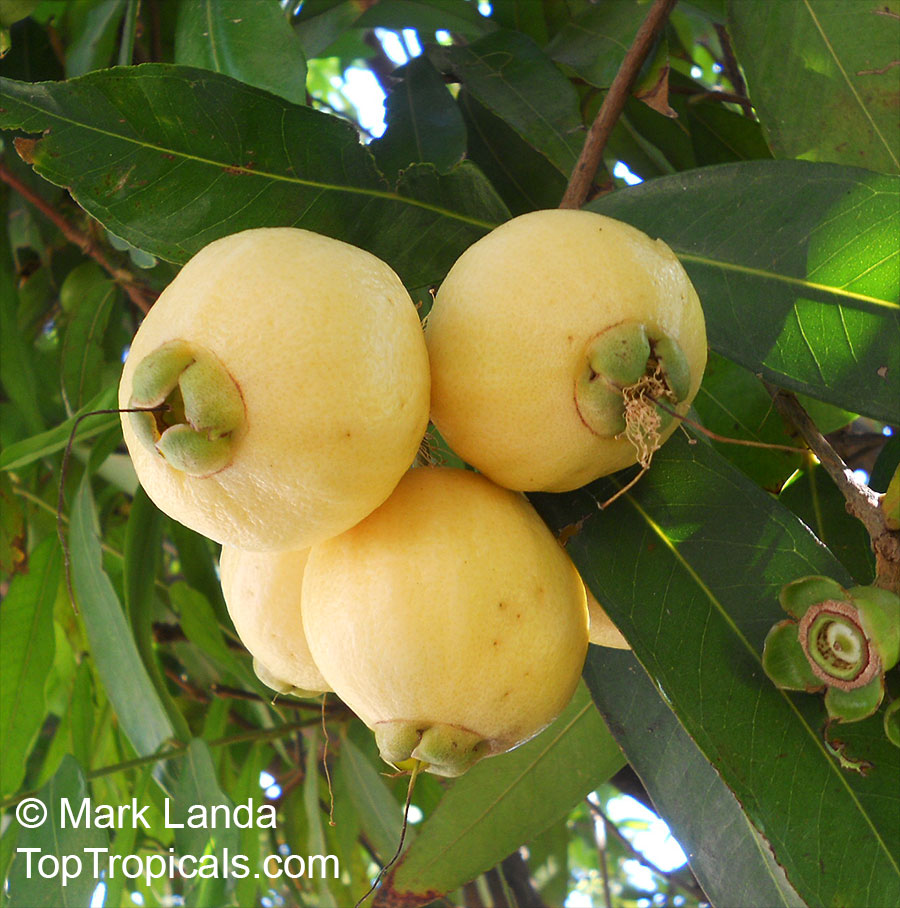
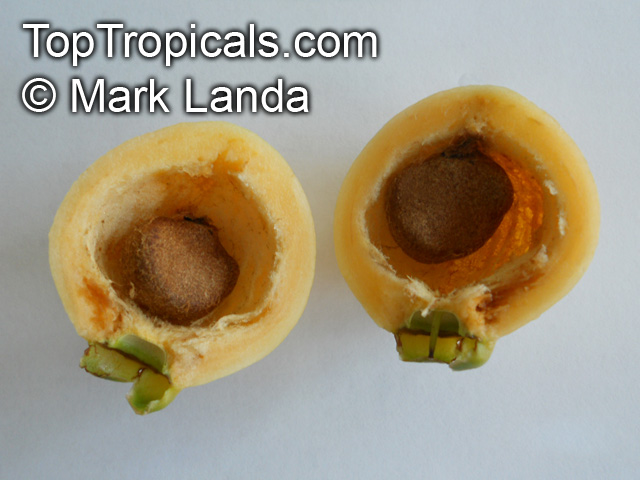
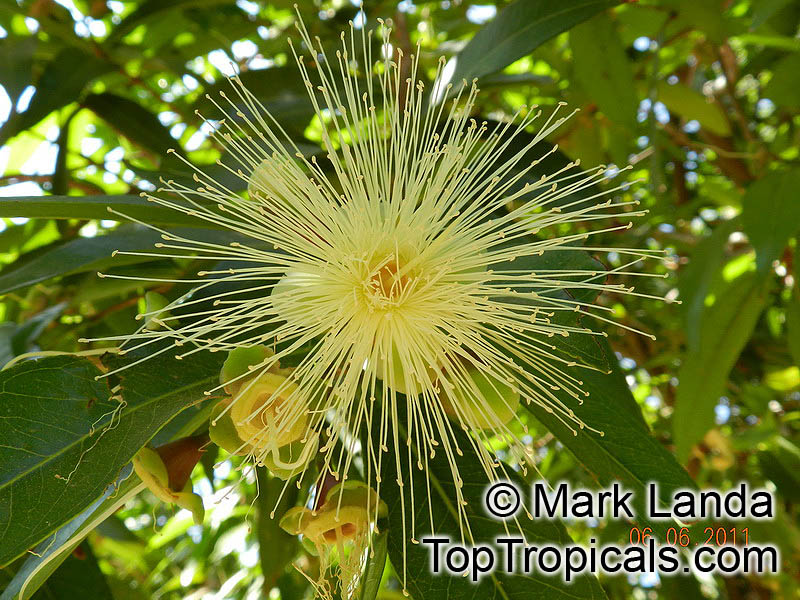
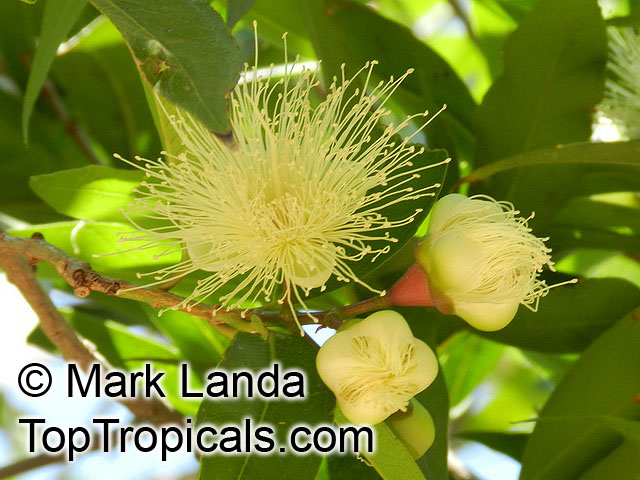
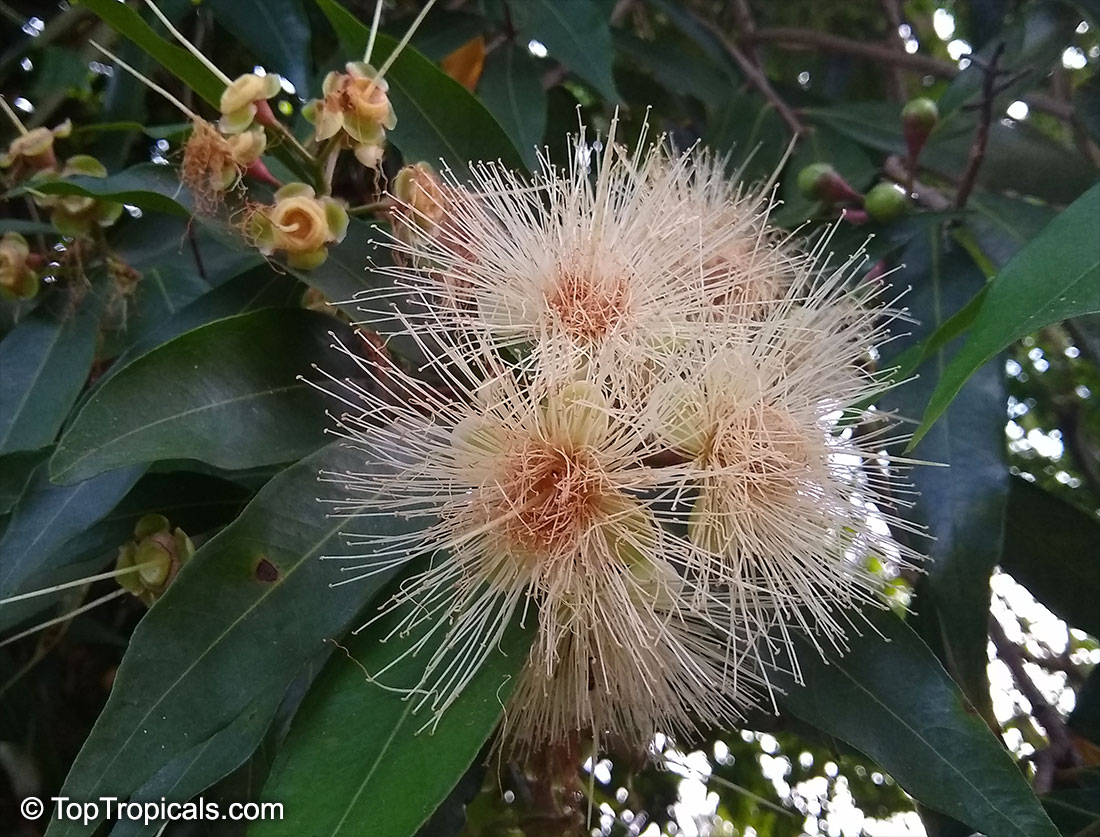
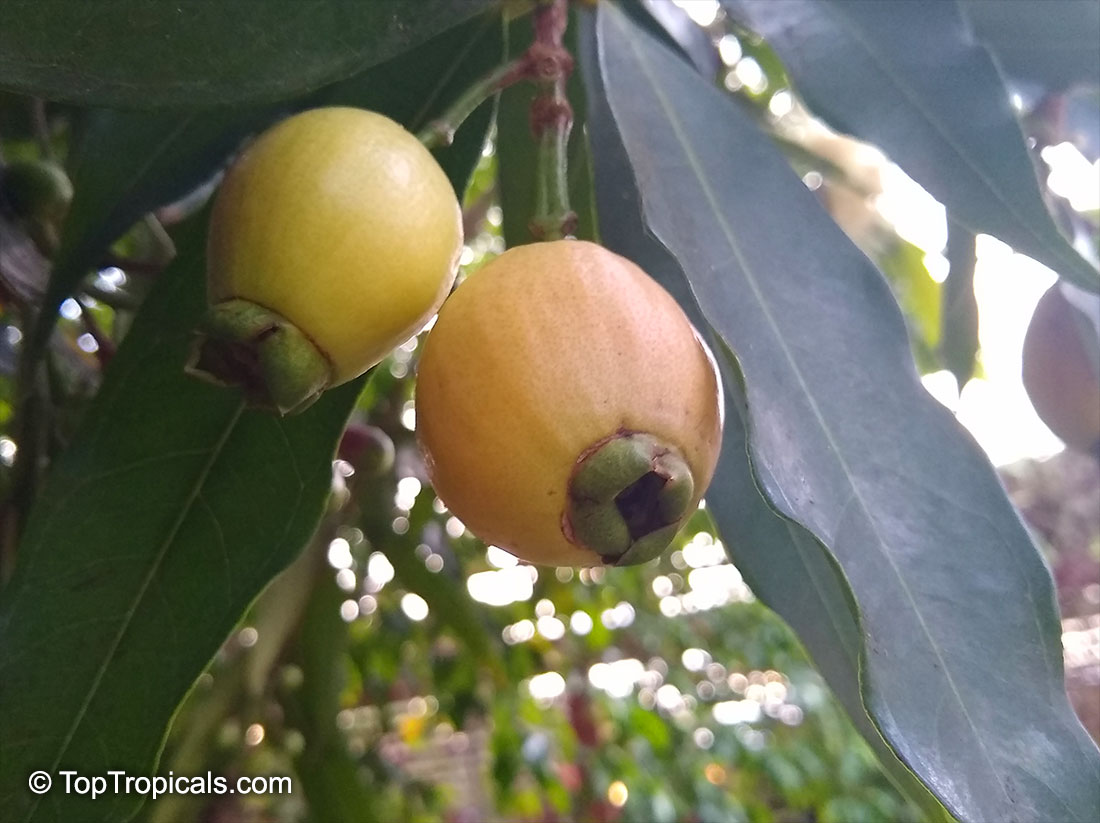
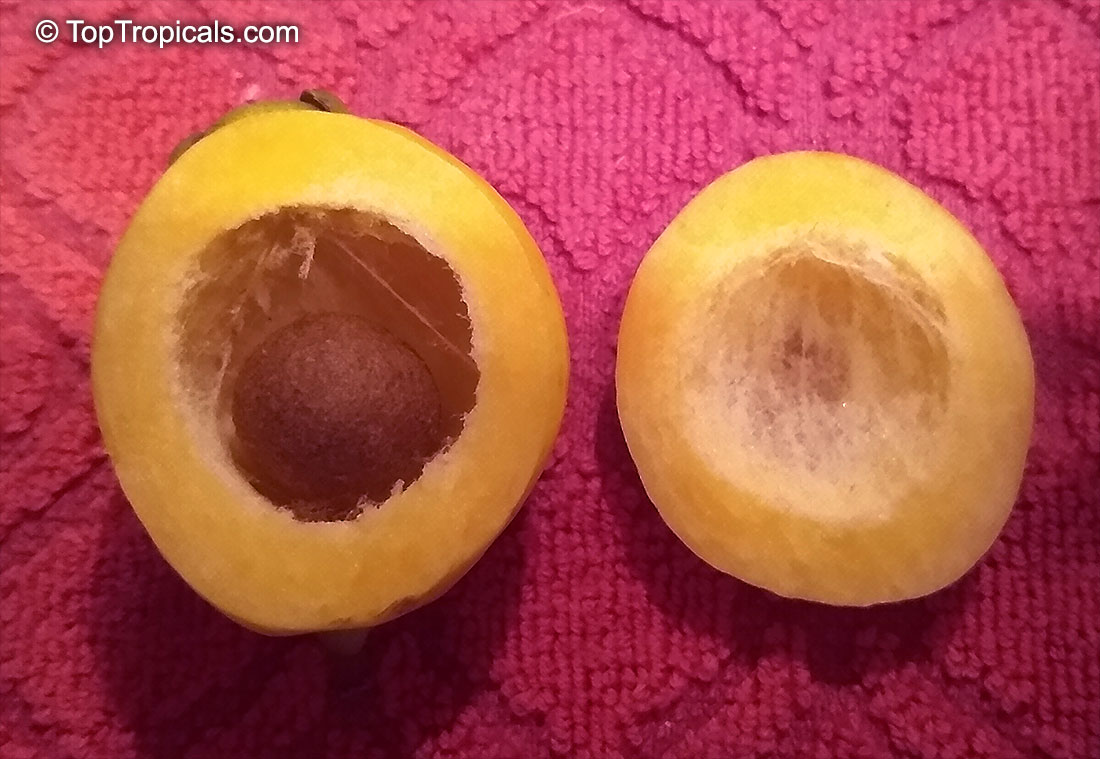
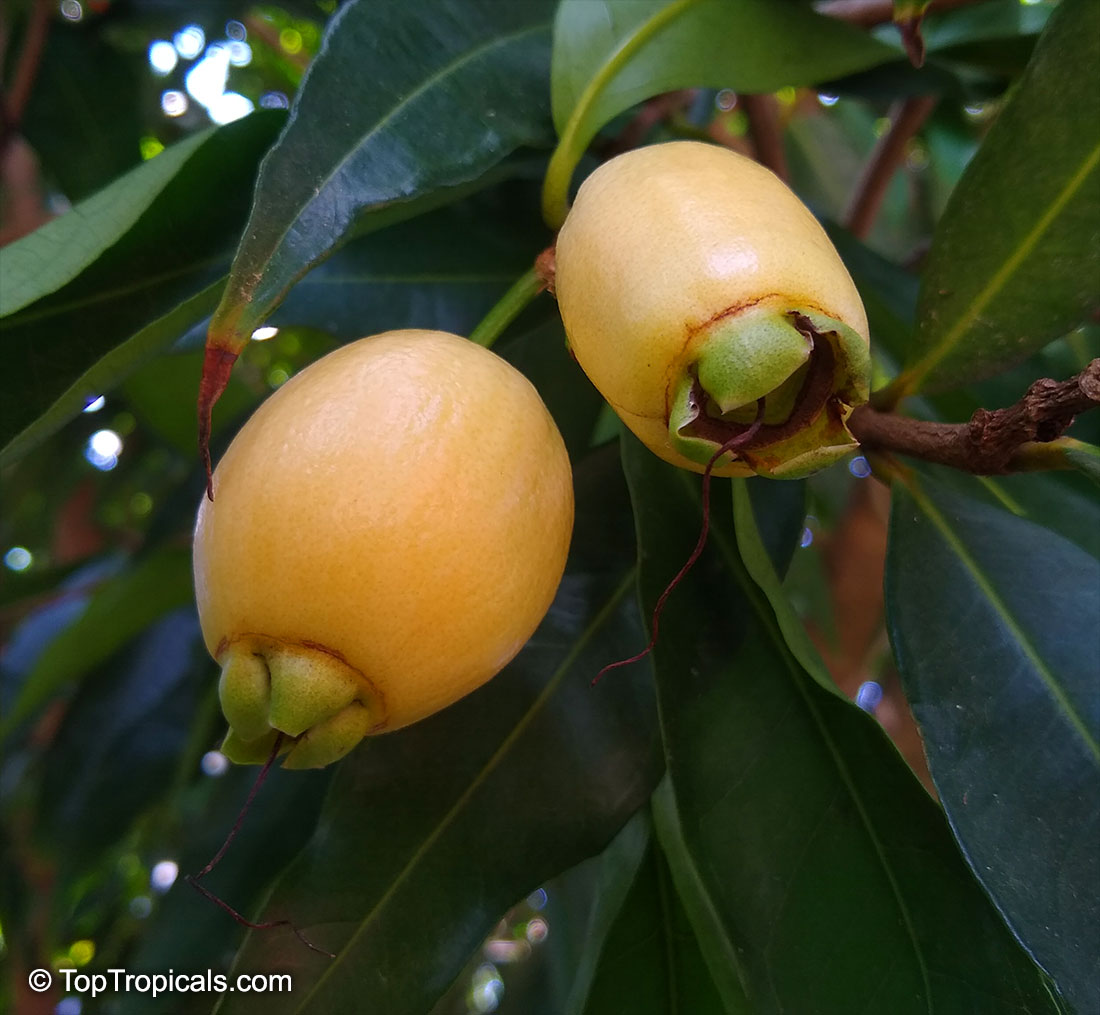
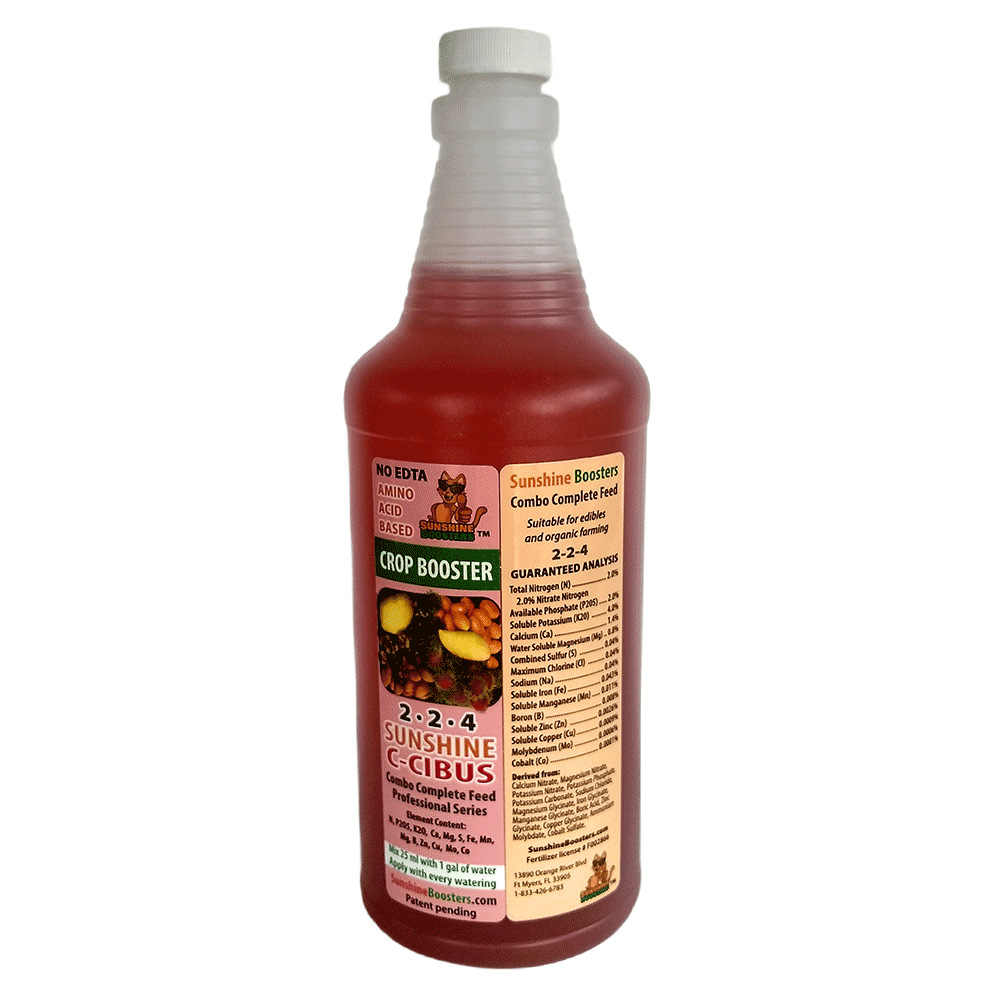 SUNSHINE C-Cibus (NPK 2-2-4) - Crop Booster for every watering.
SUNSHINE C-Cibus (NPK 2-2-4) - Crop Booster for every watering. 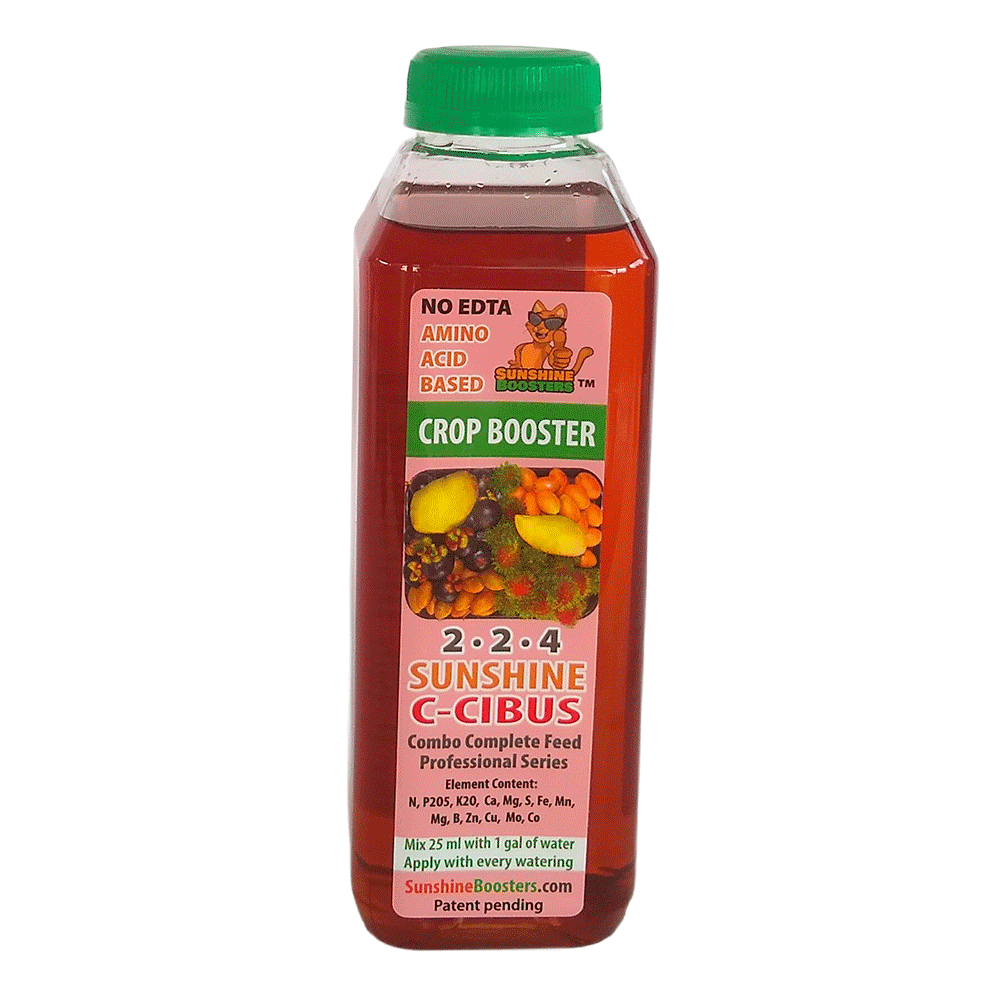 SUNSHINE C-Cibus (NPK 2-2-4) - Crop Booster for every watering.
SUNSHINE C-Cibus (NPK 2-2-4) - Crop Booster for every watering. 